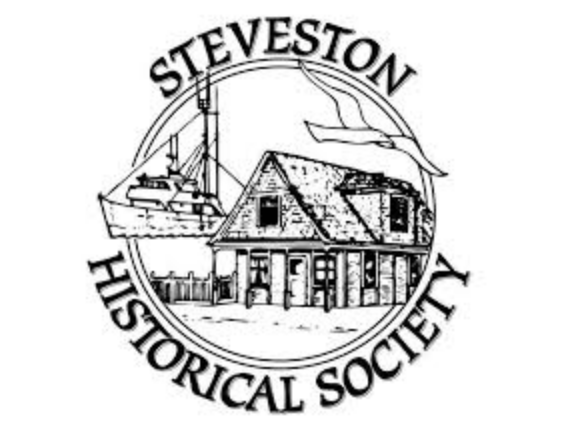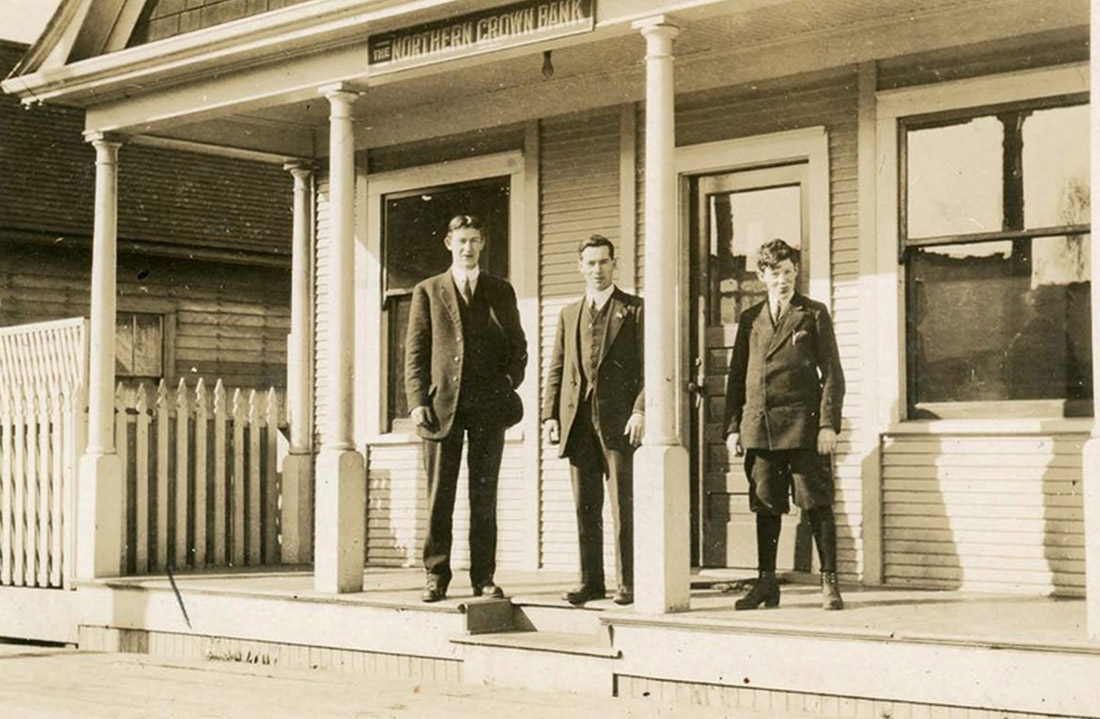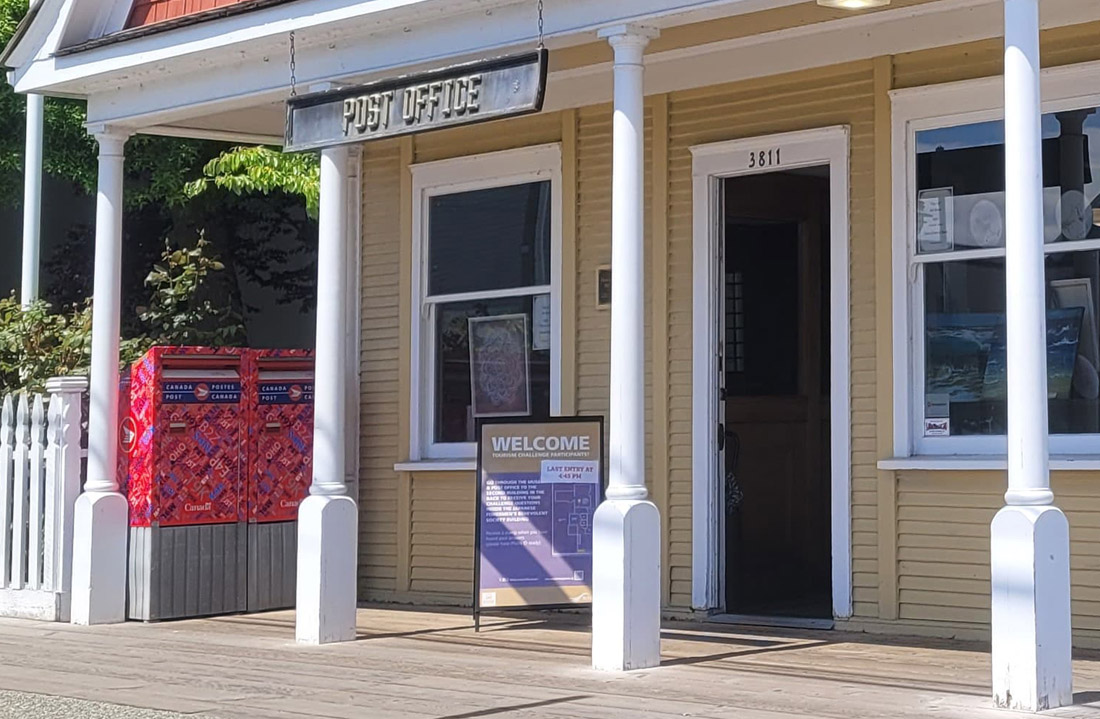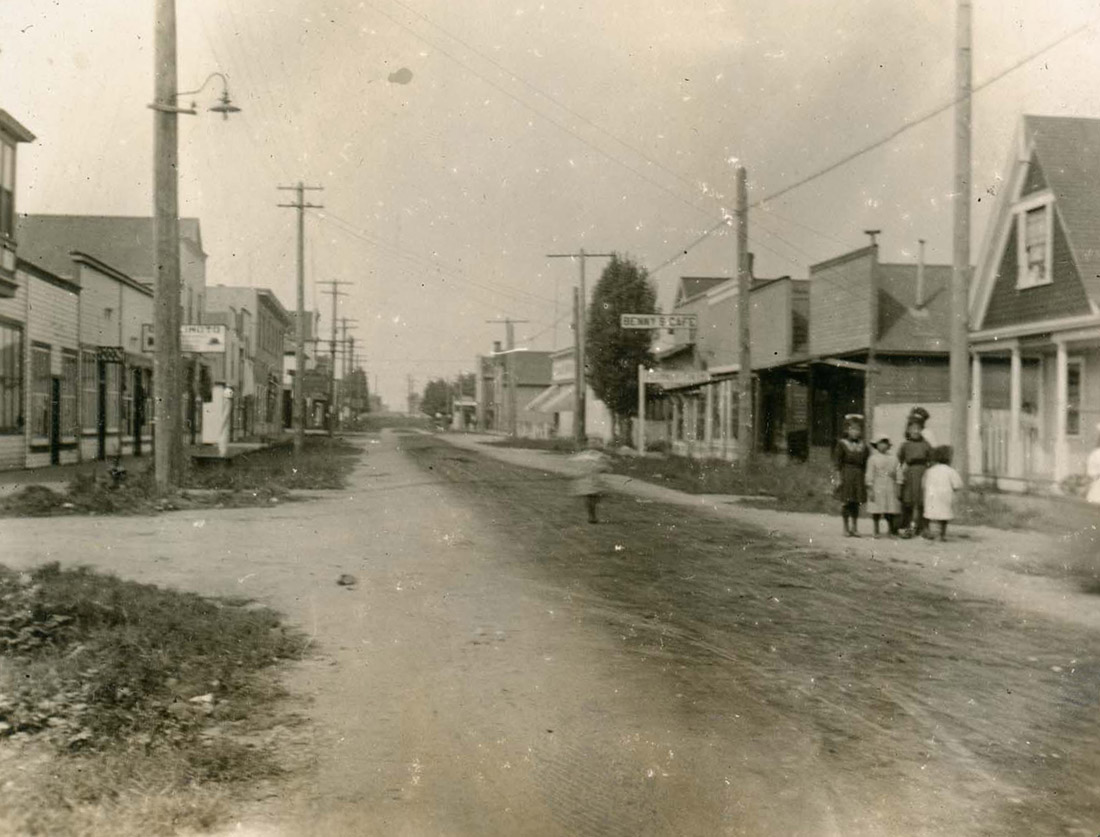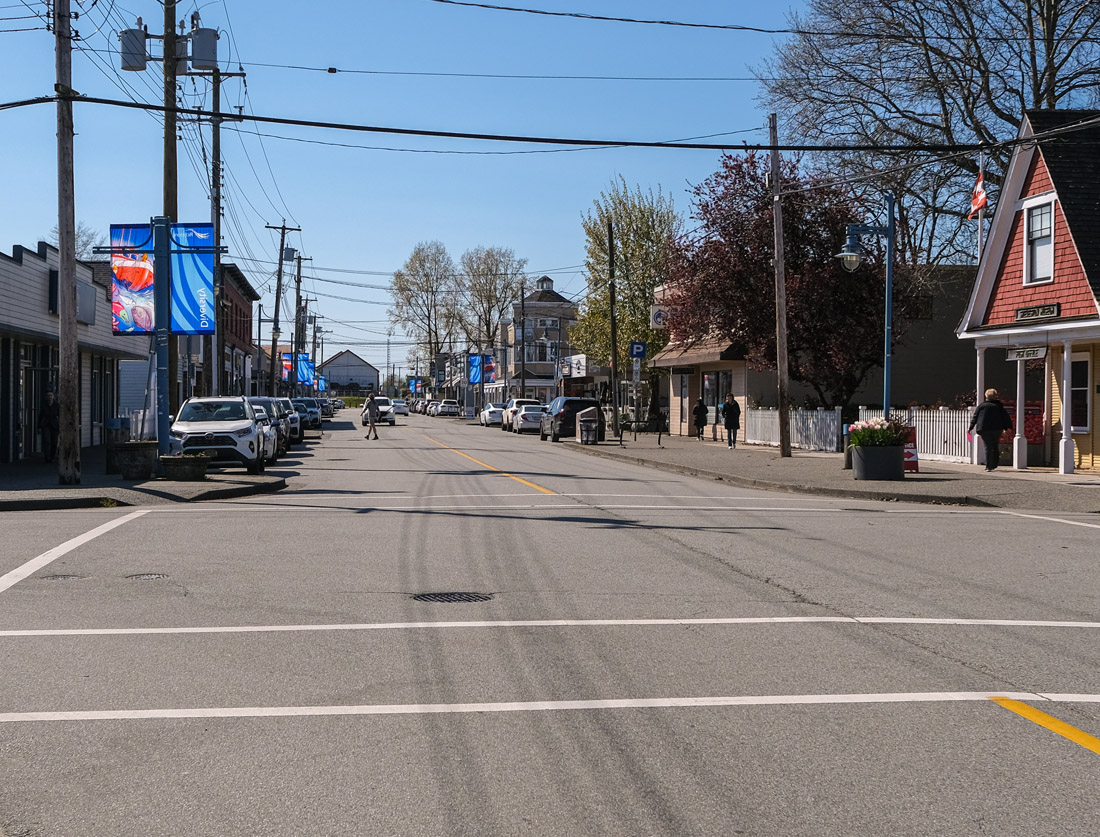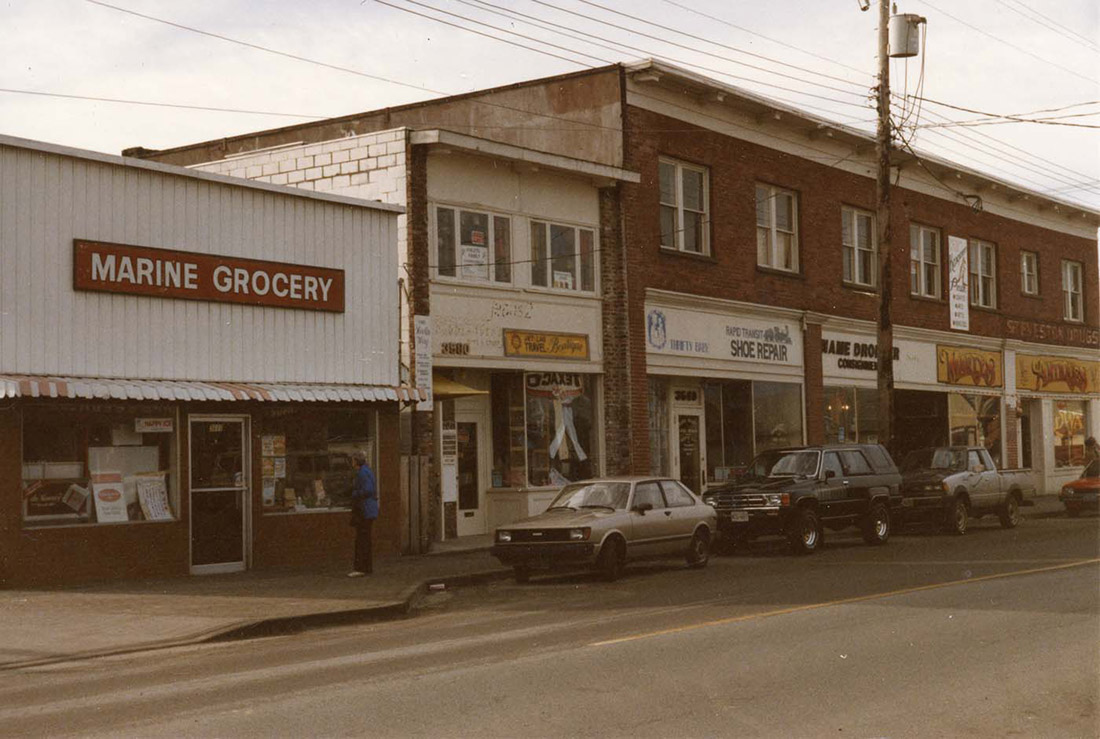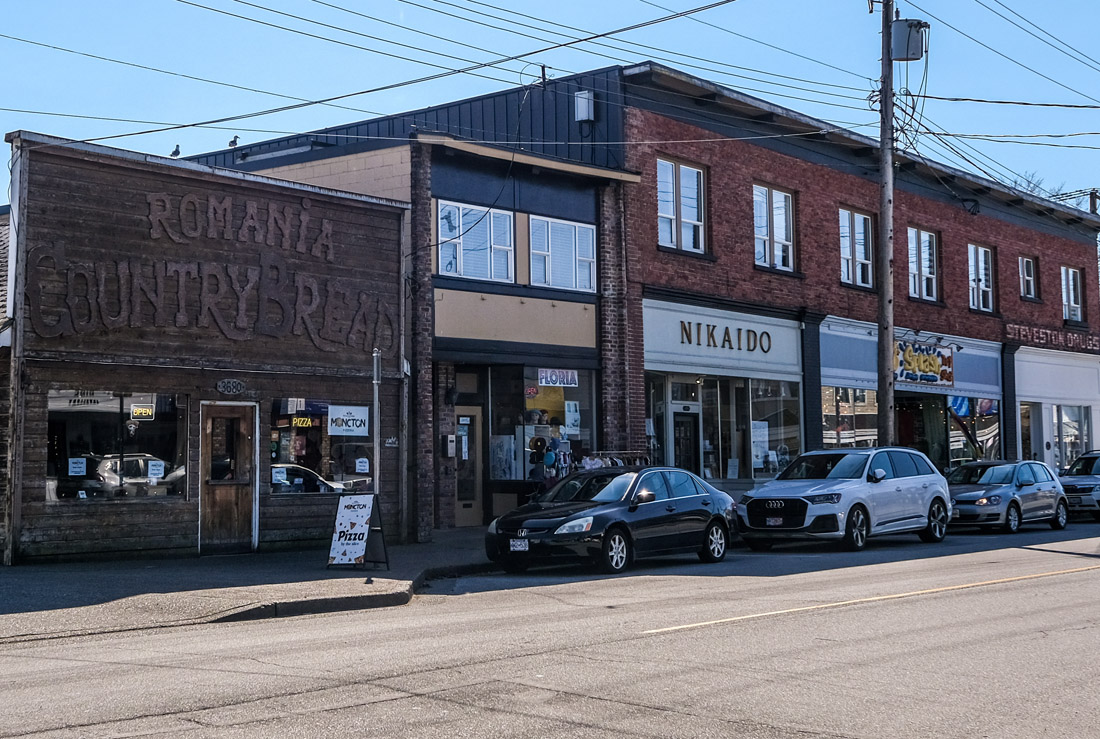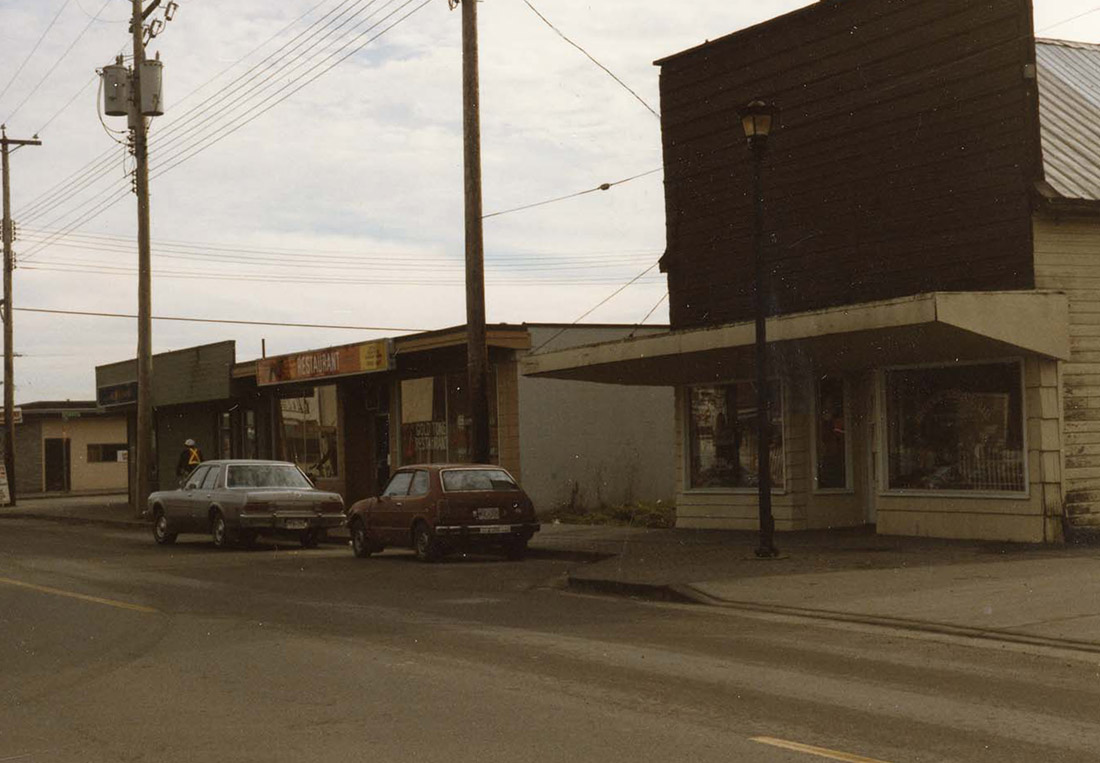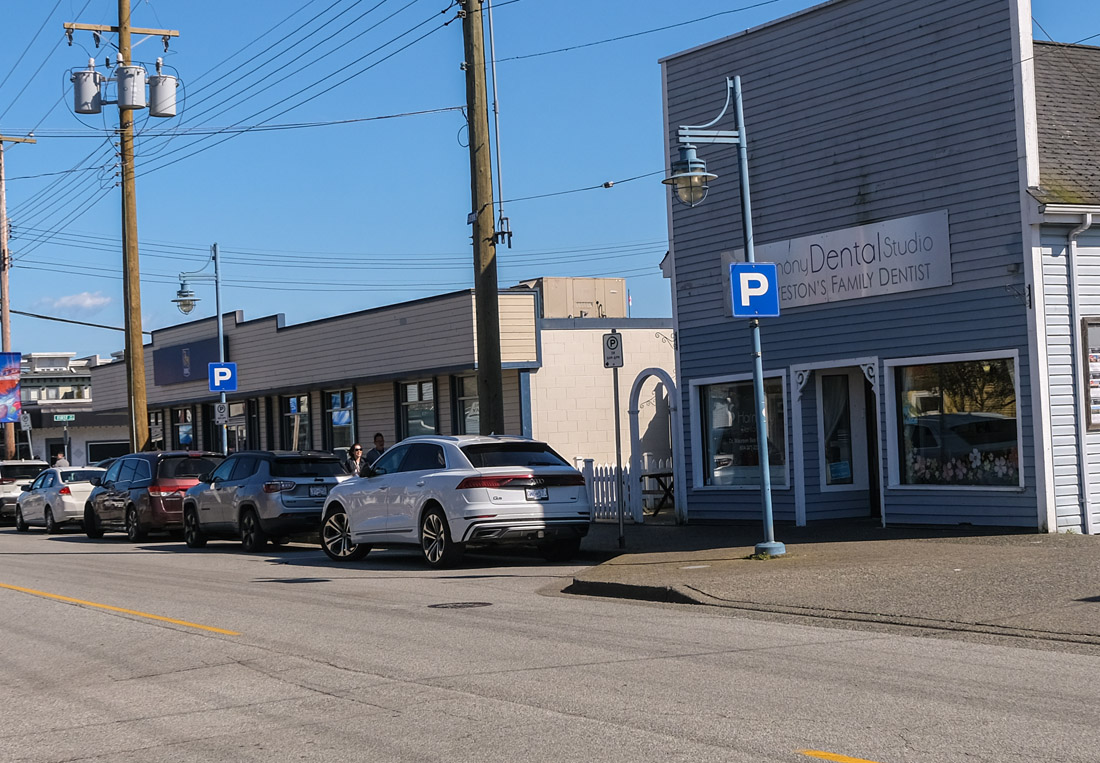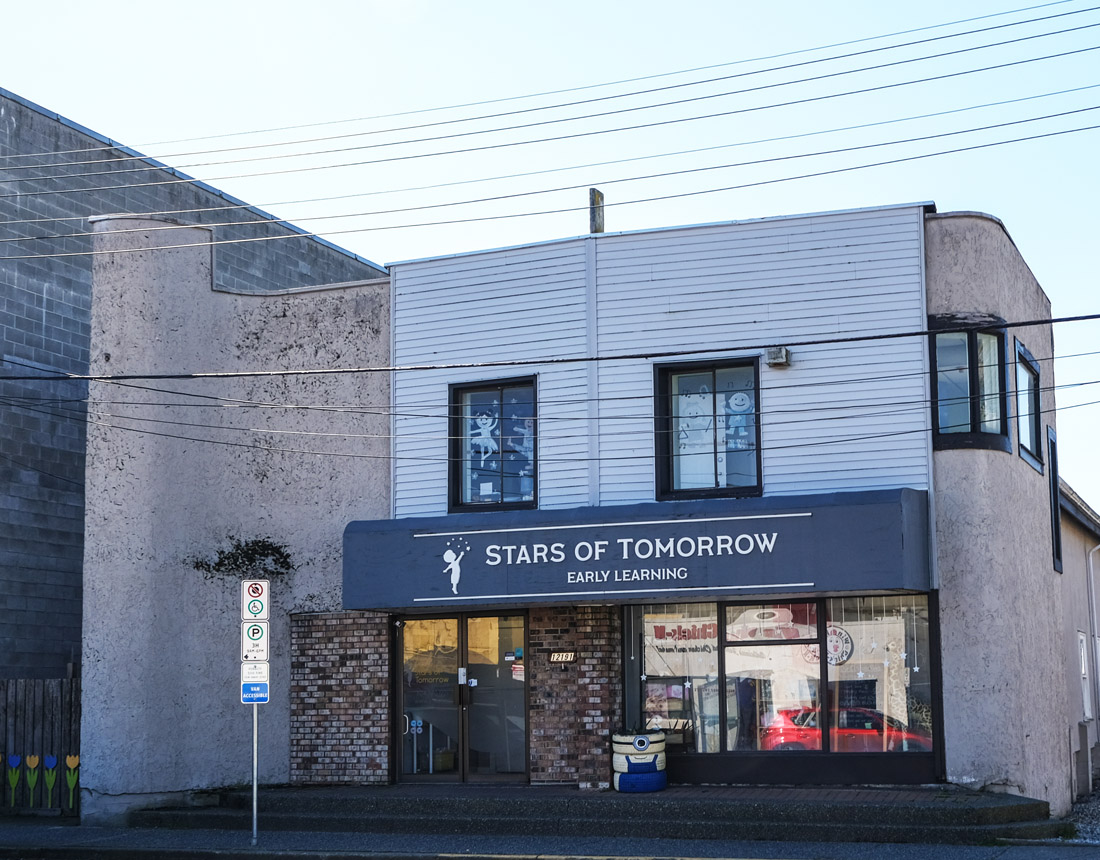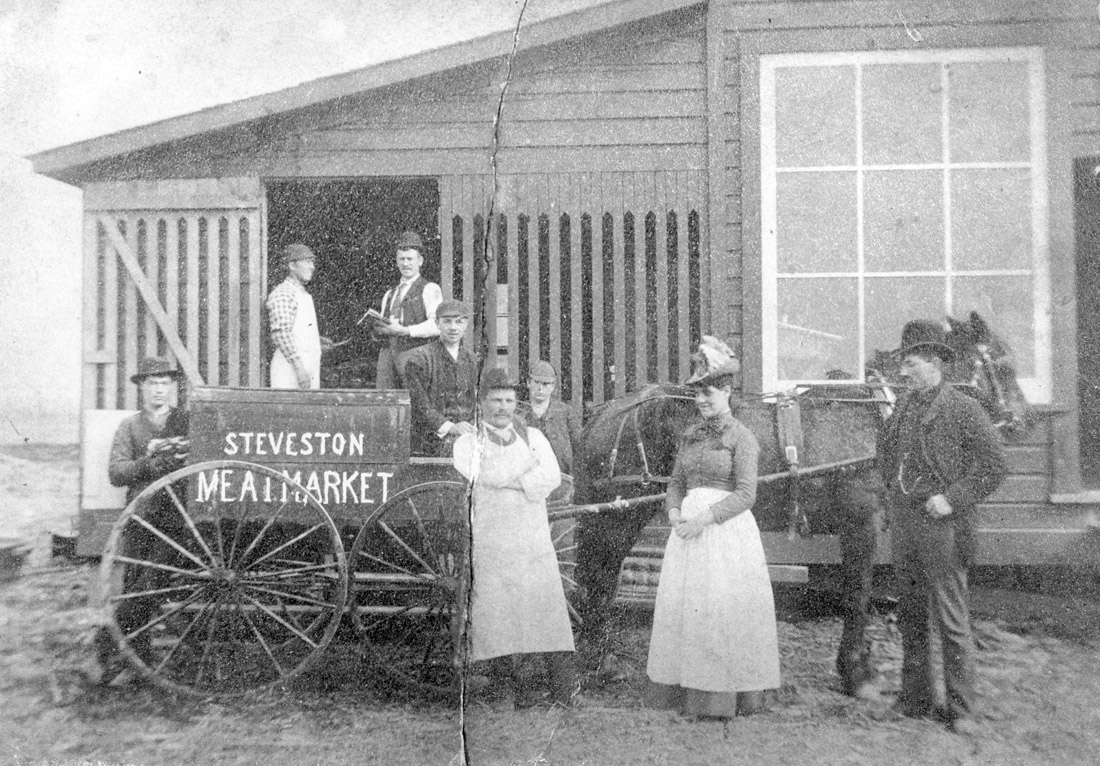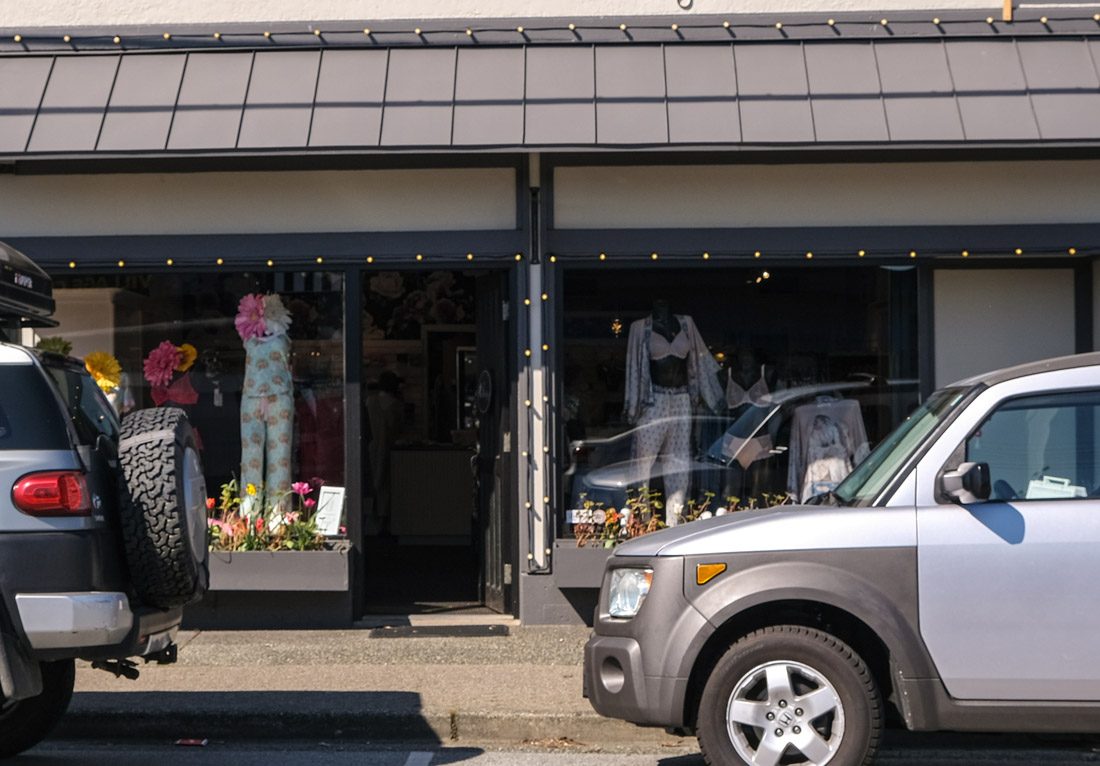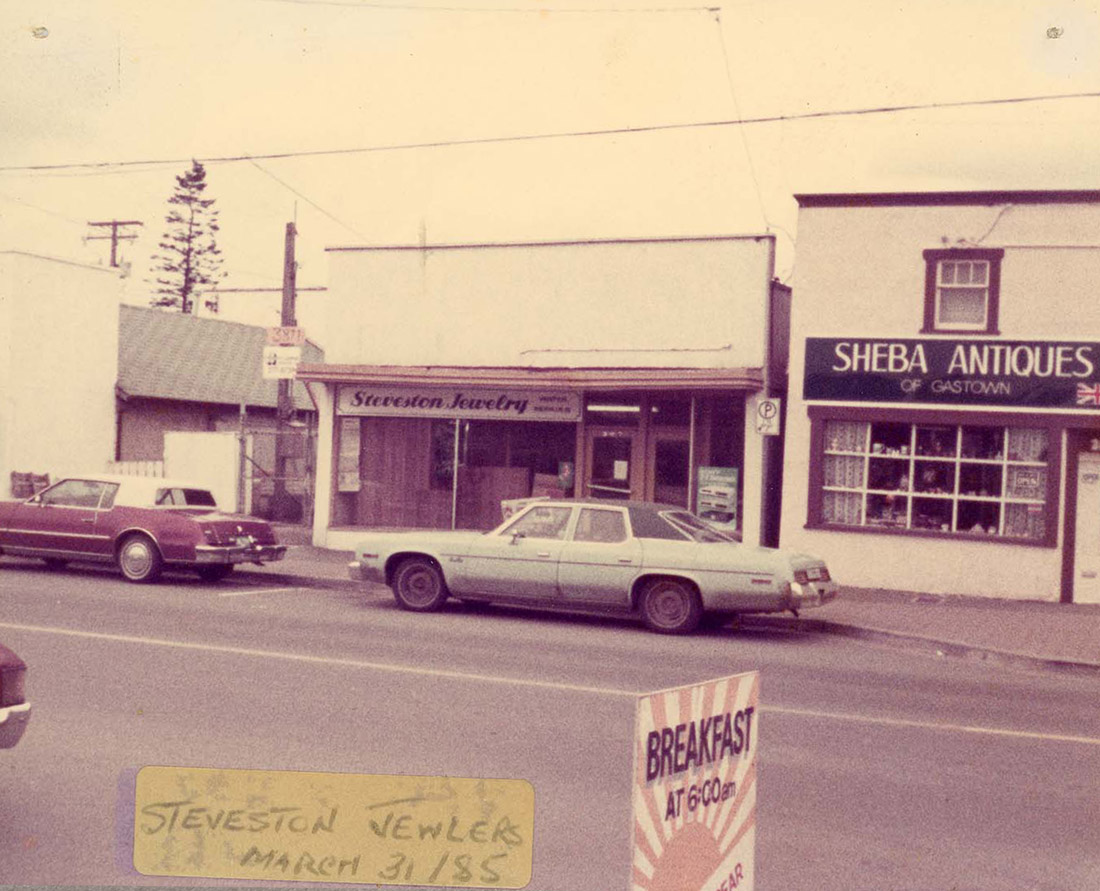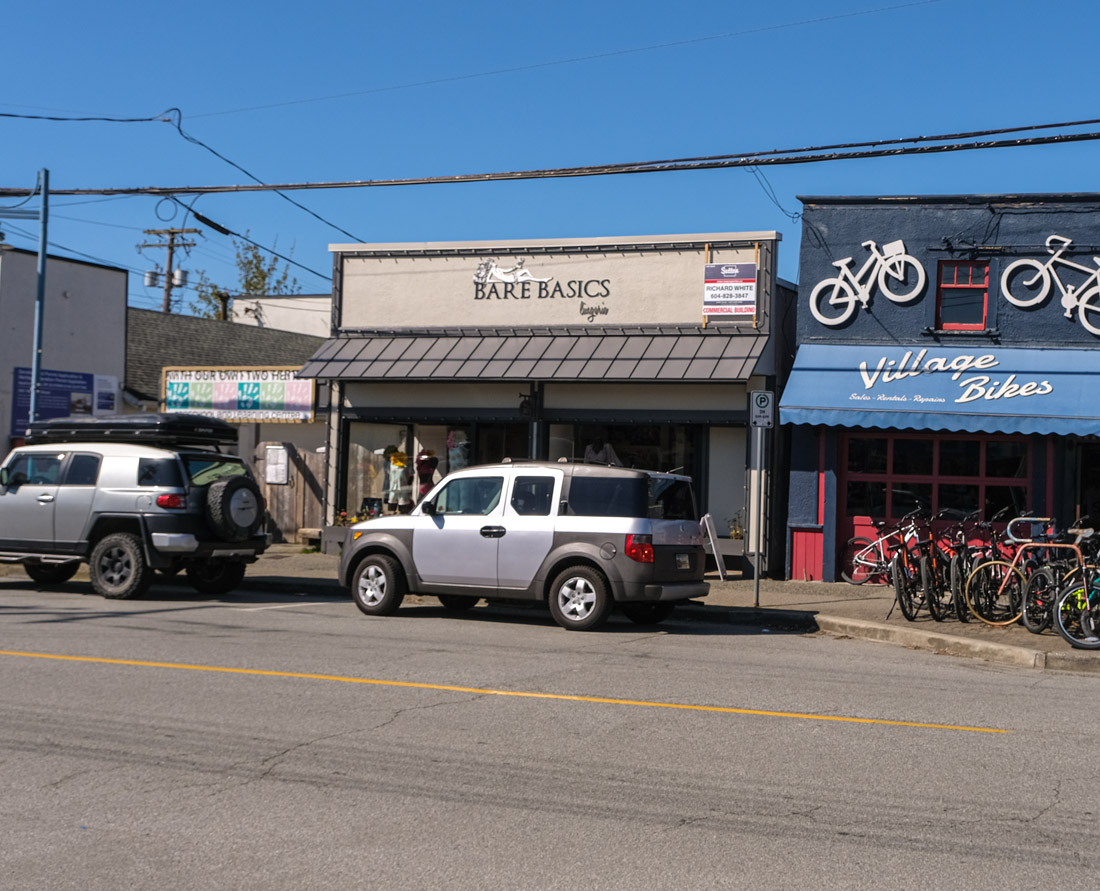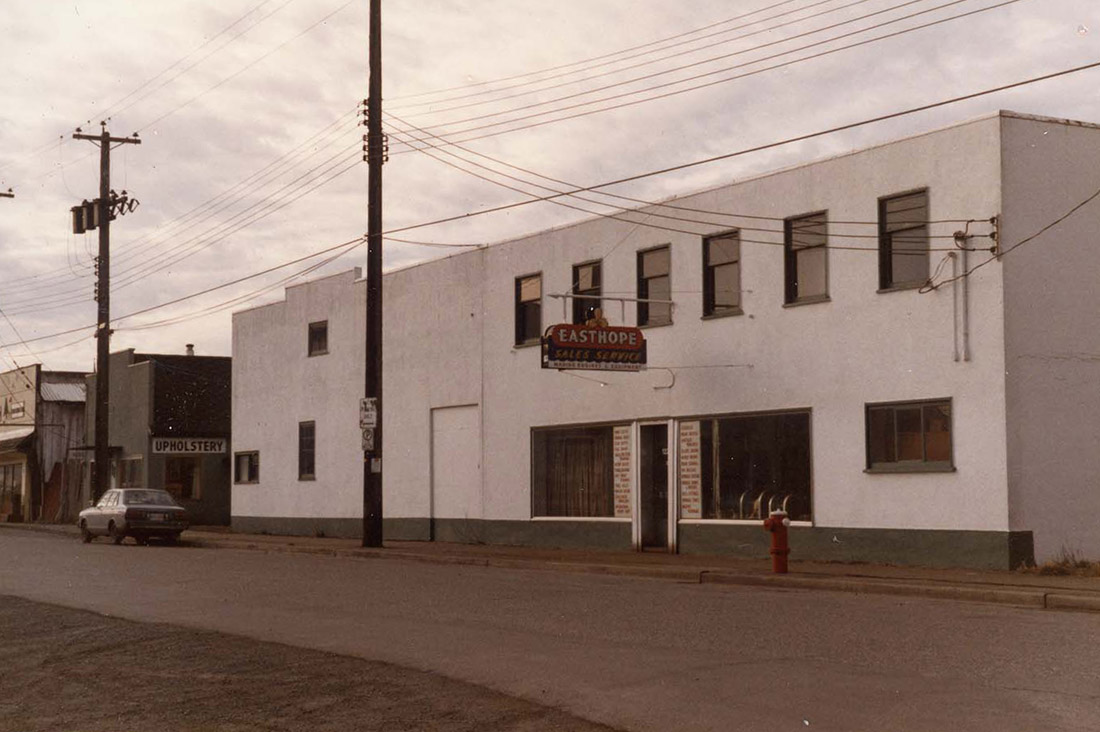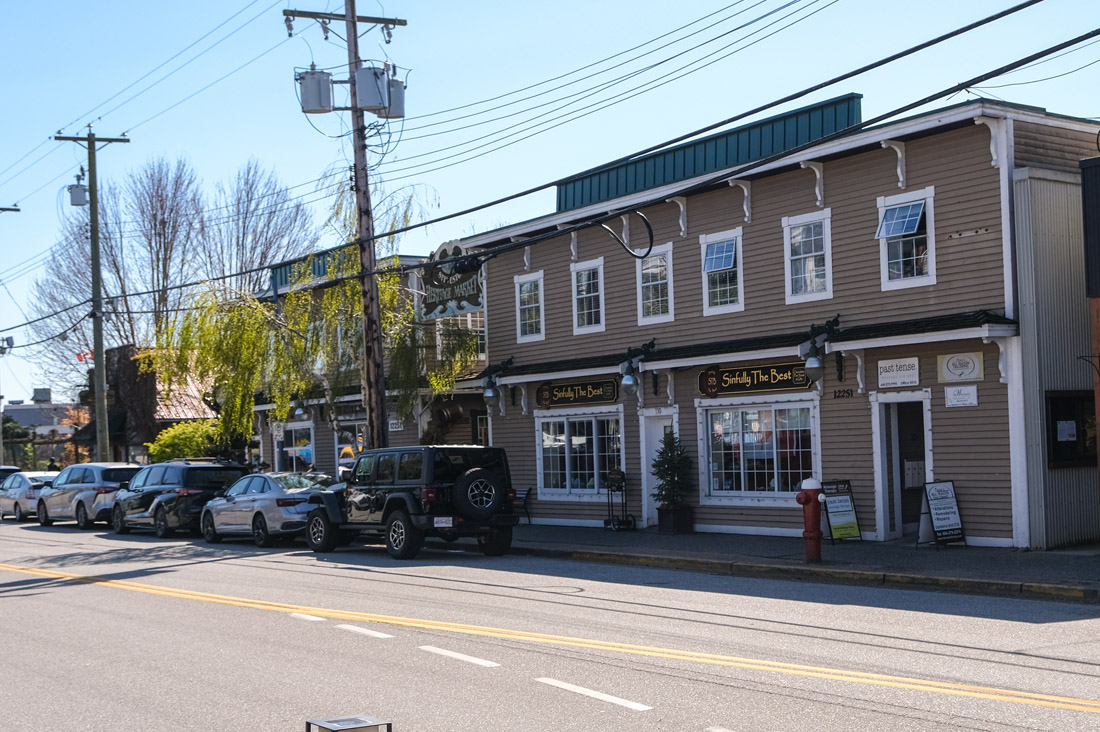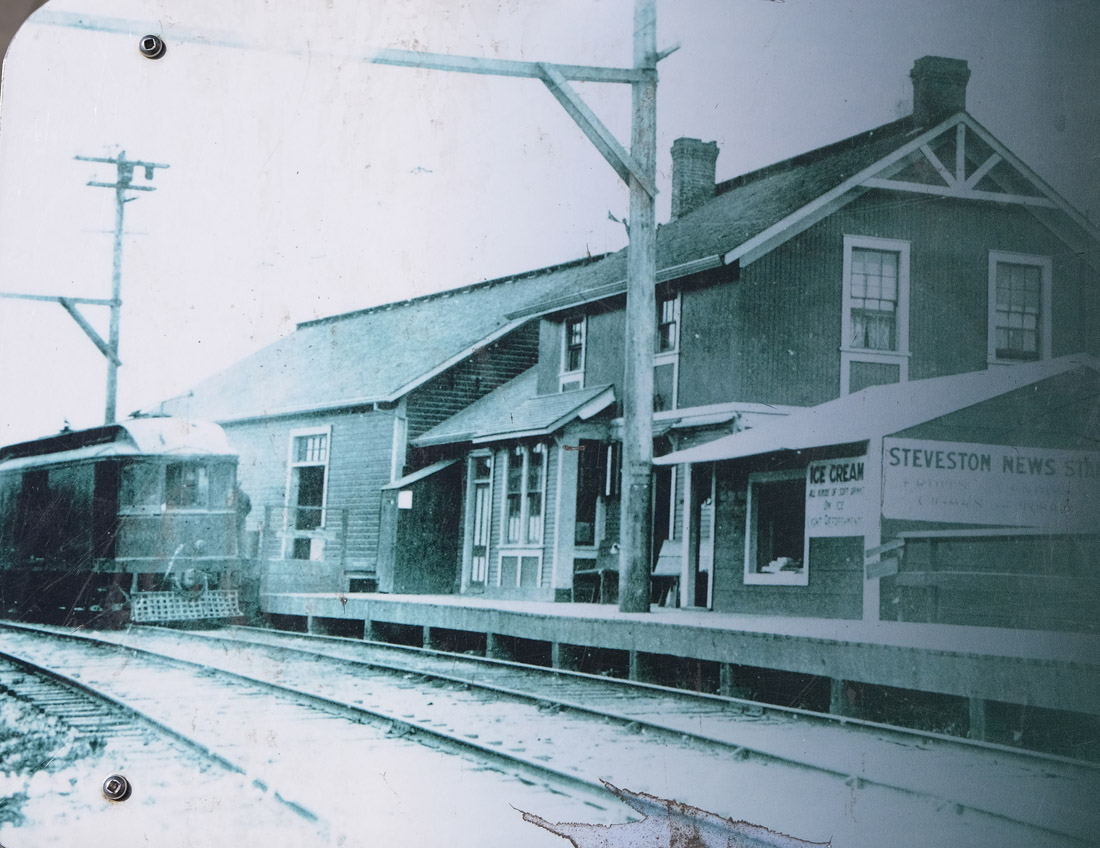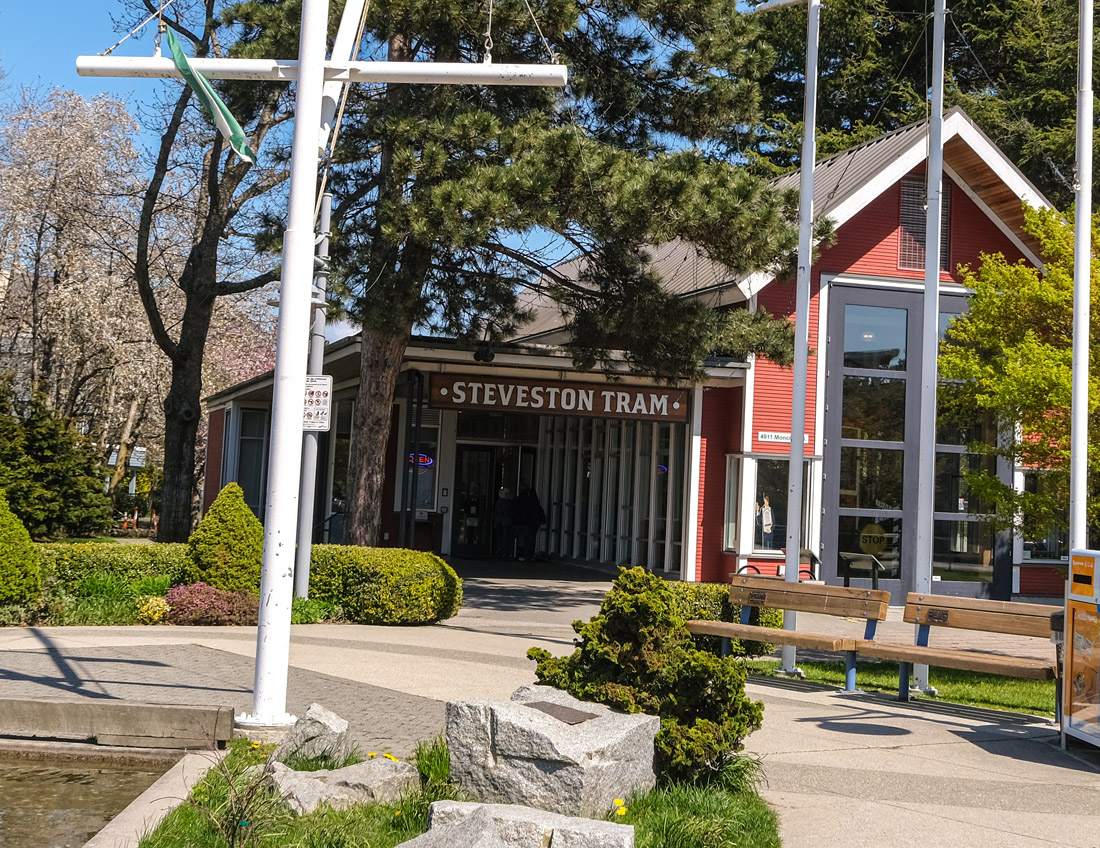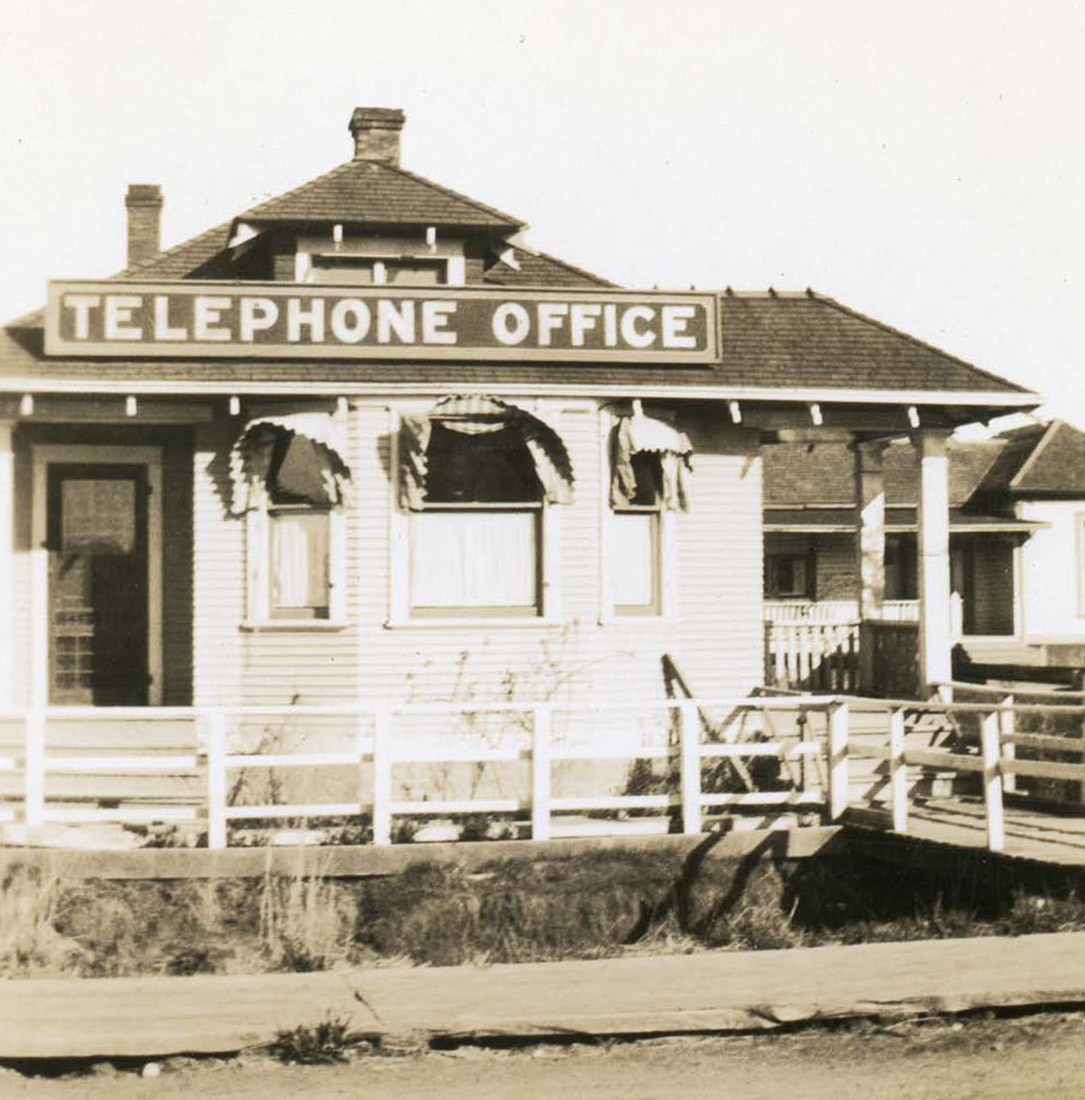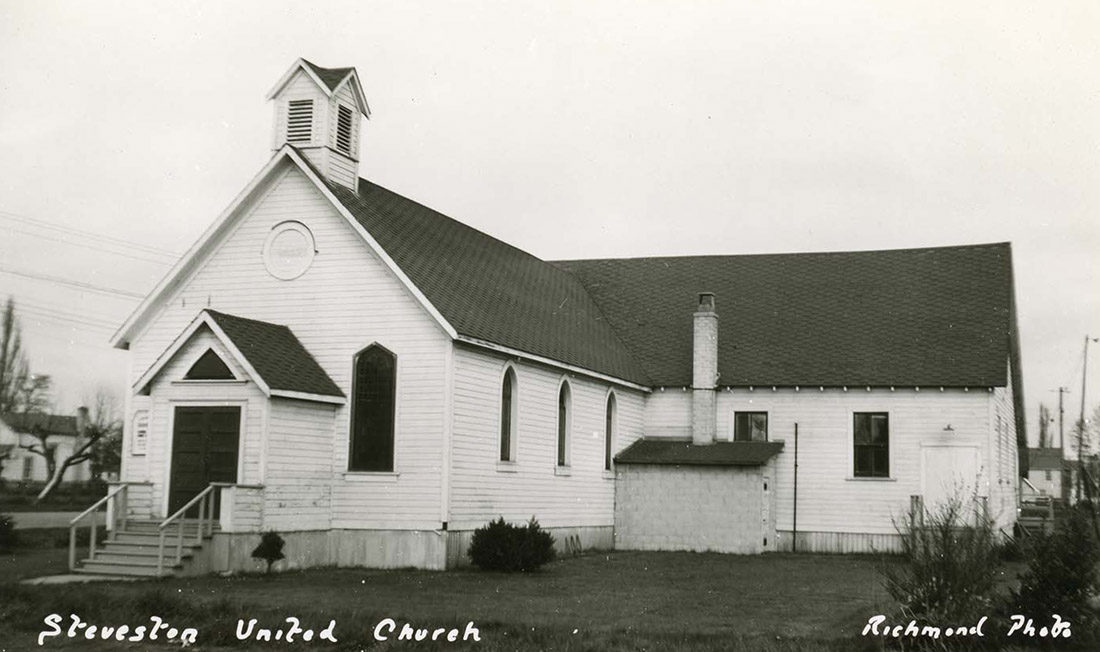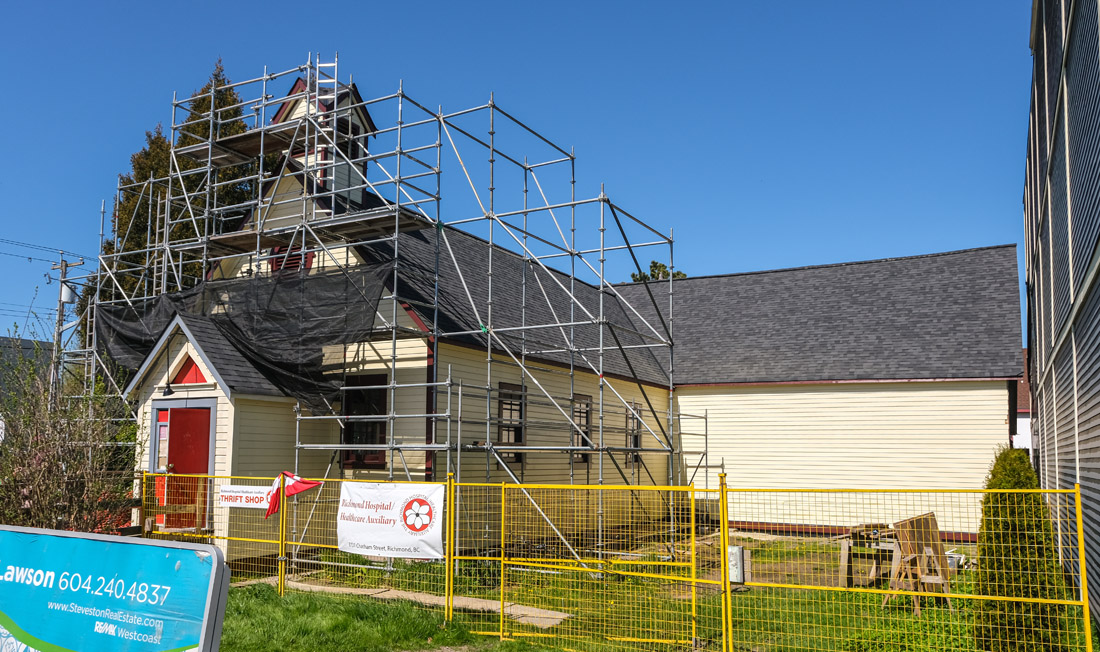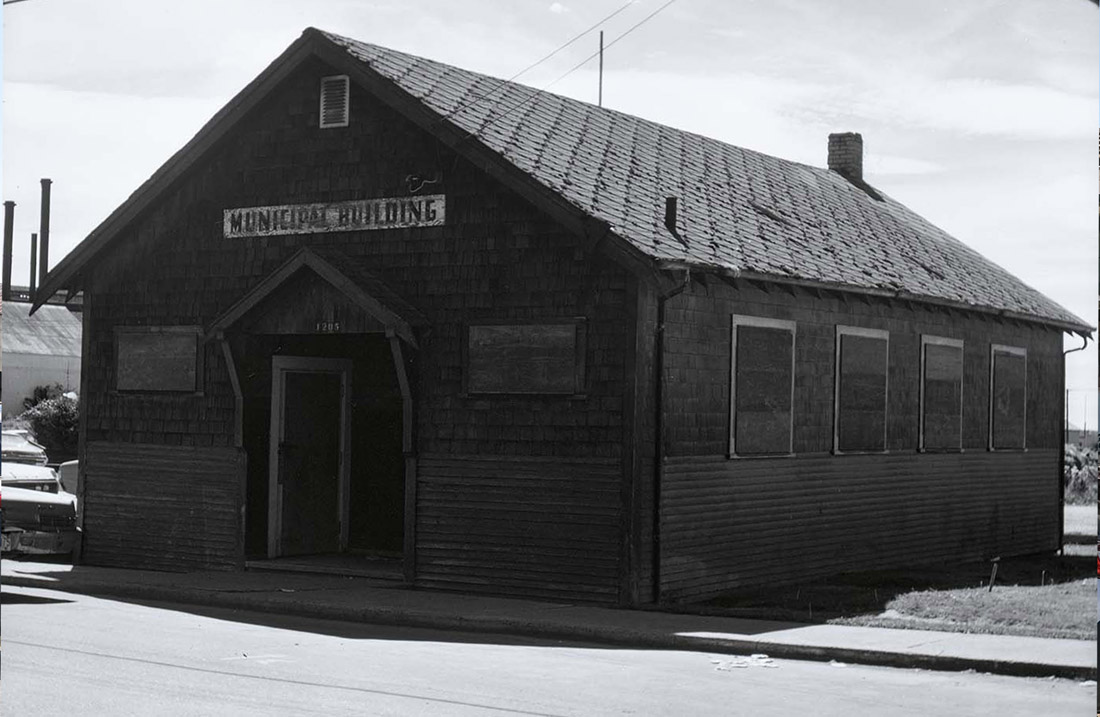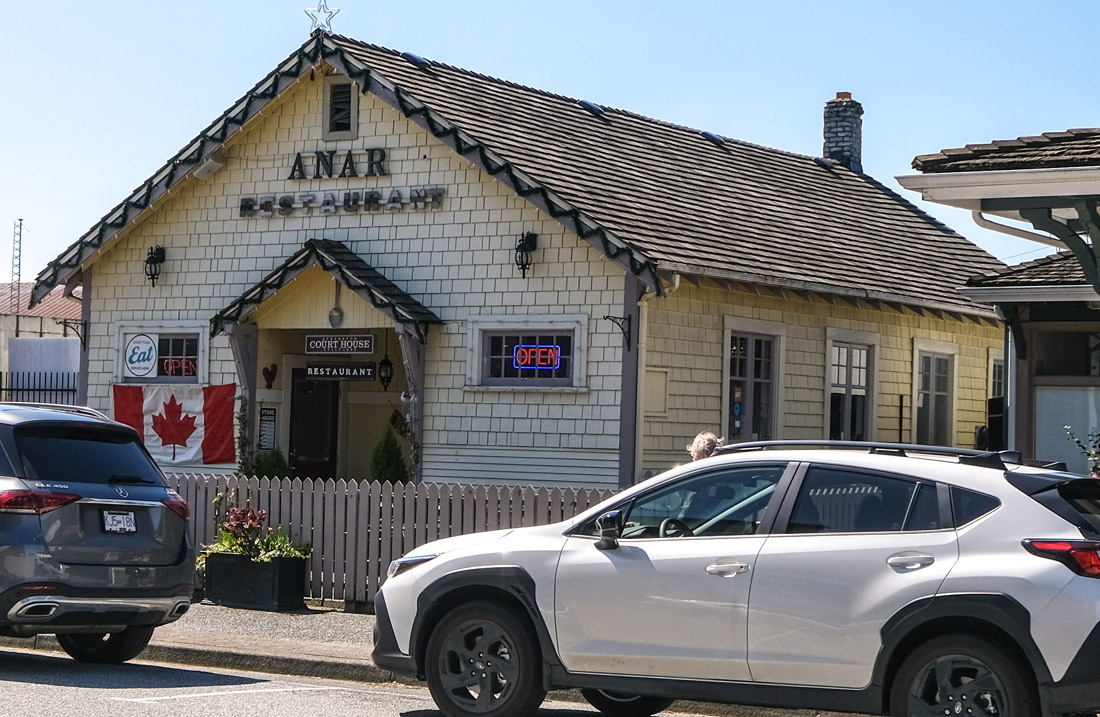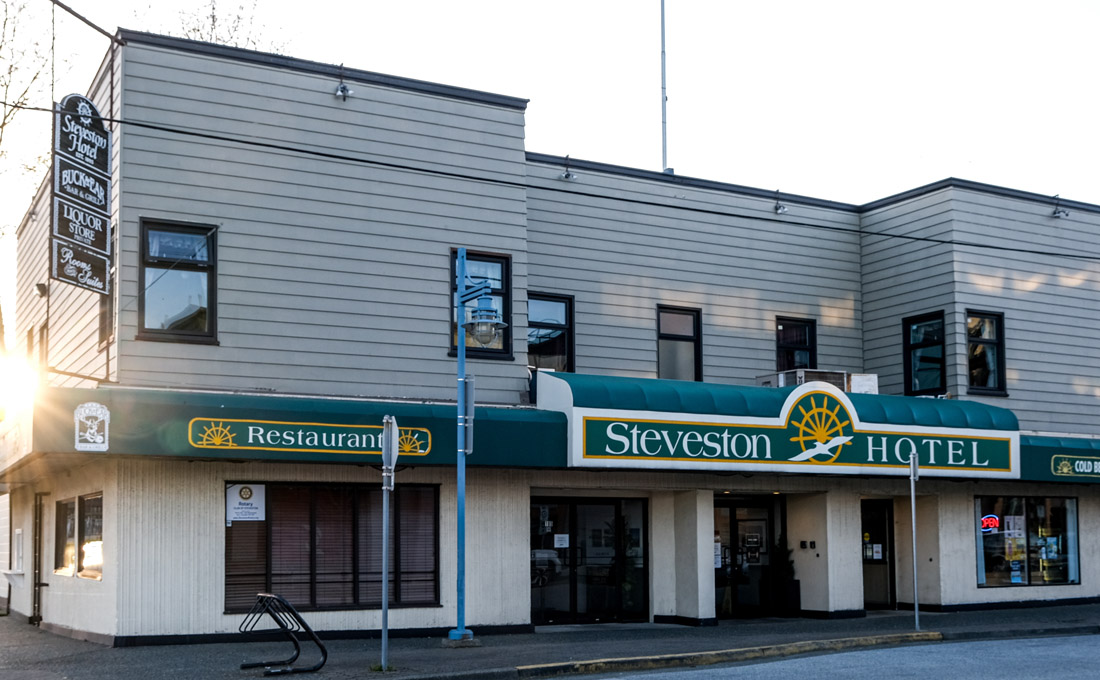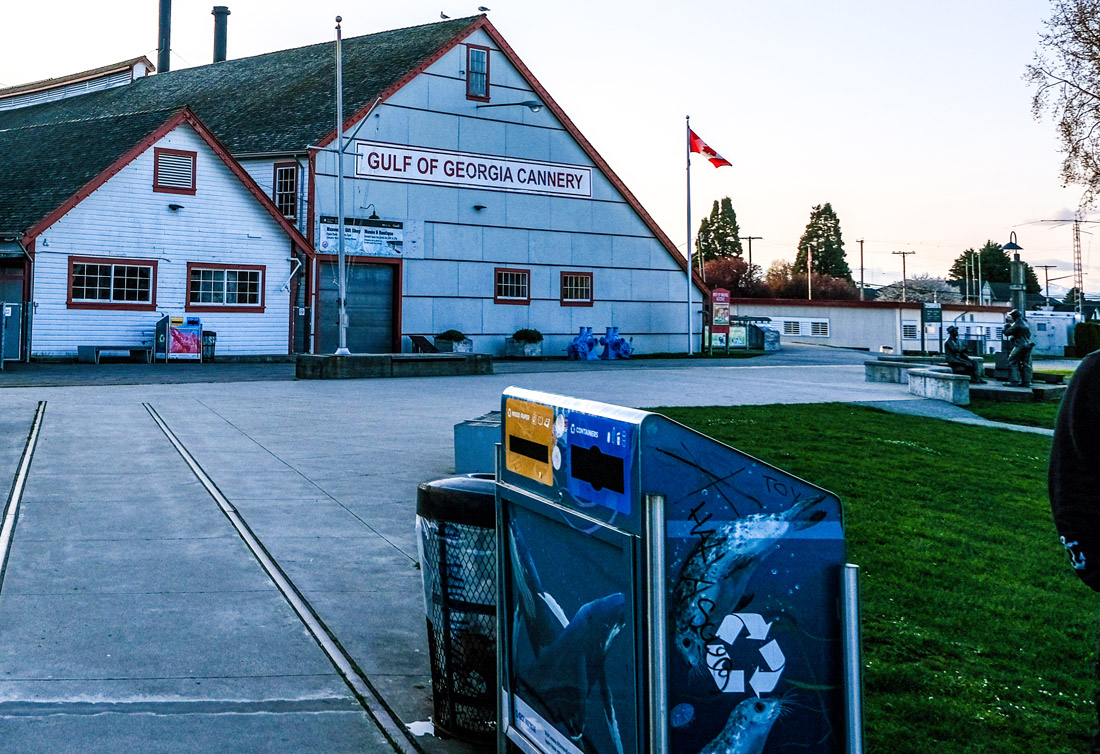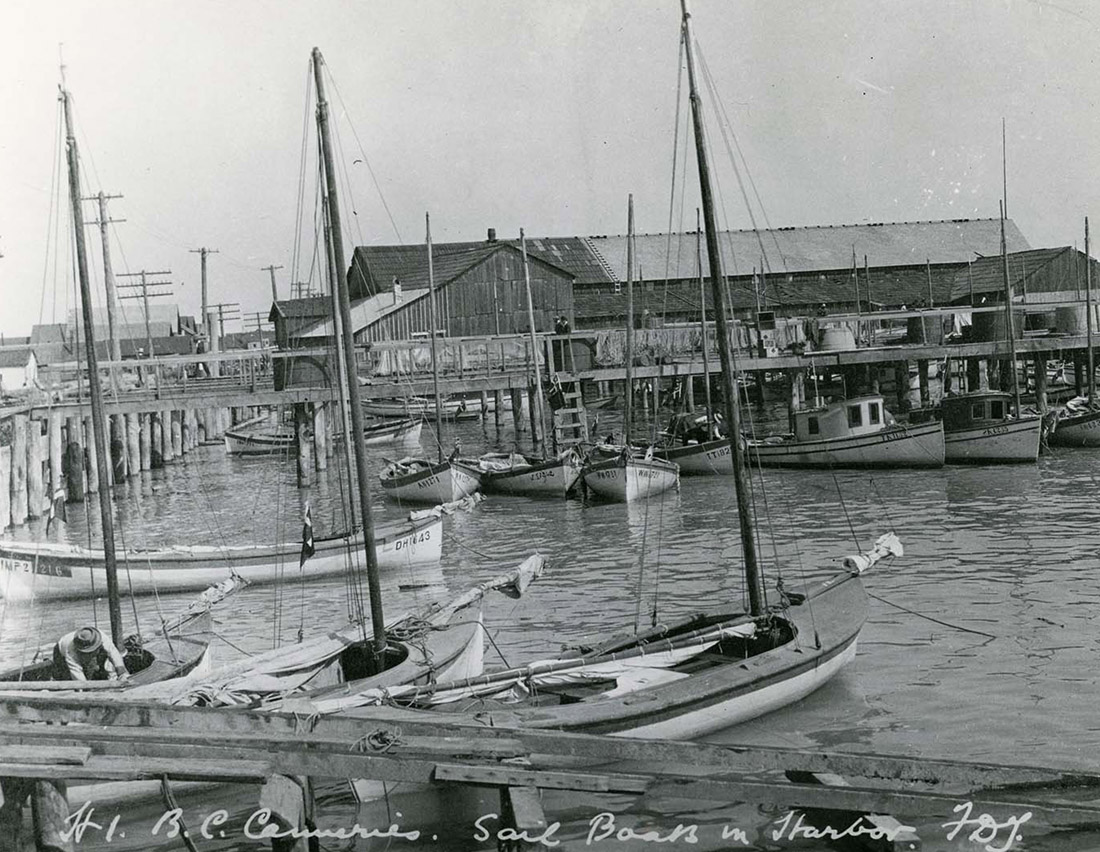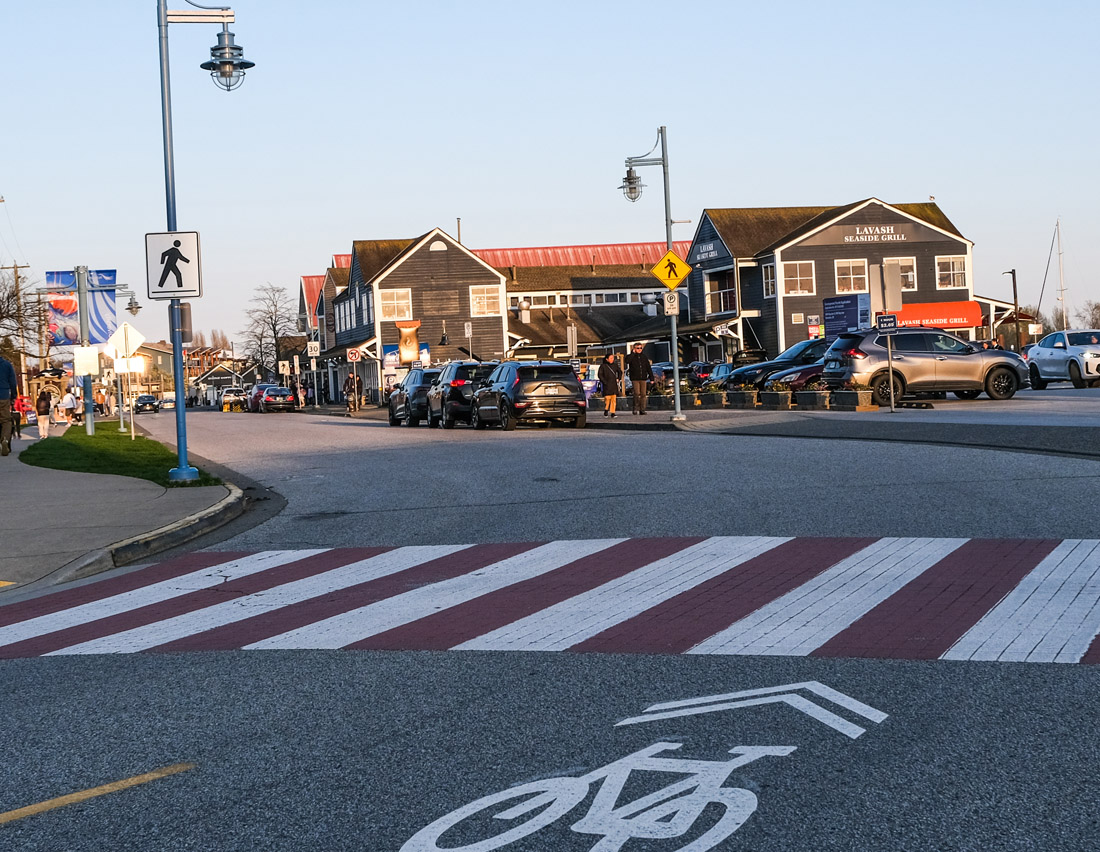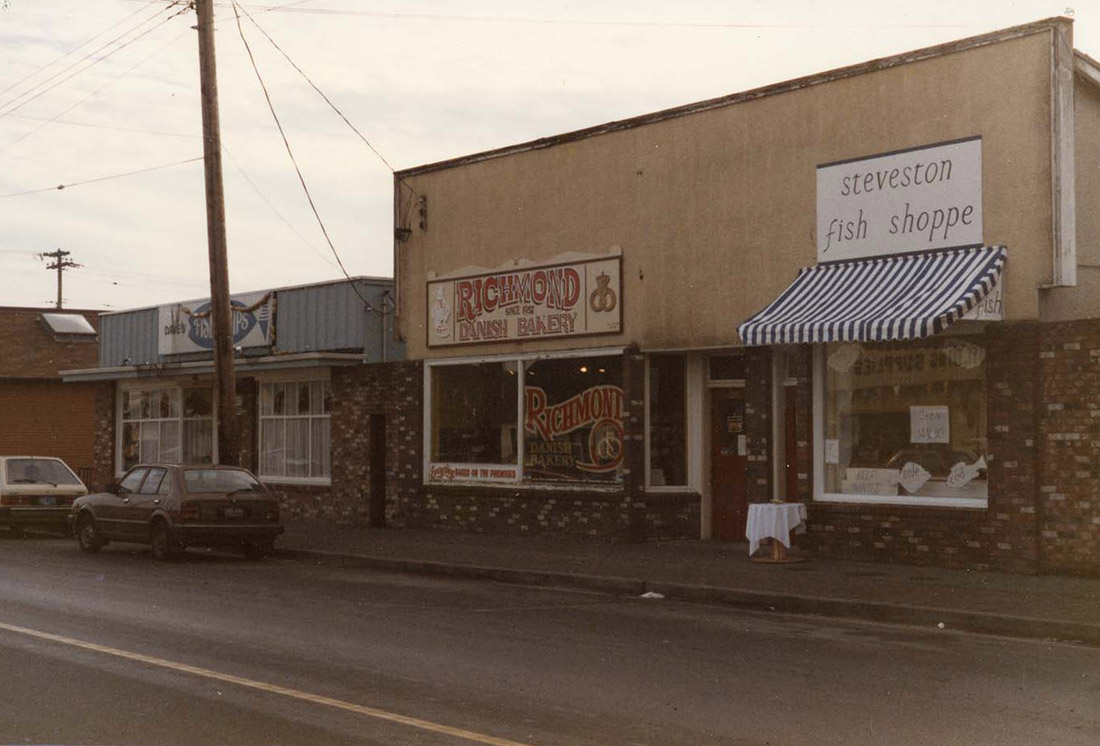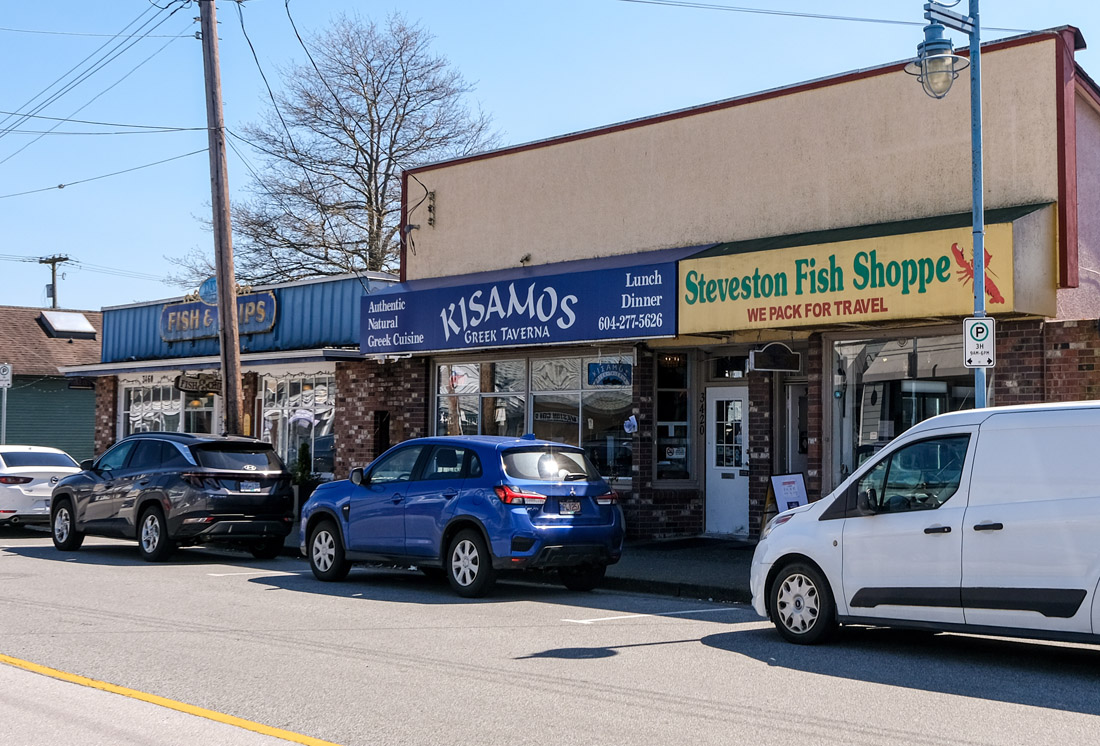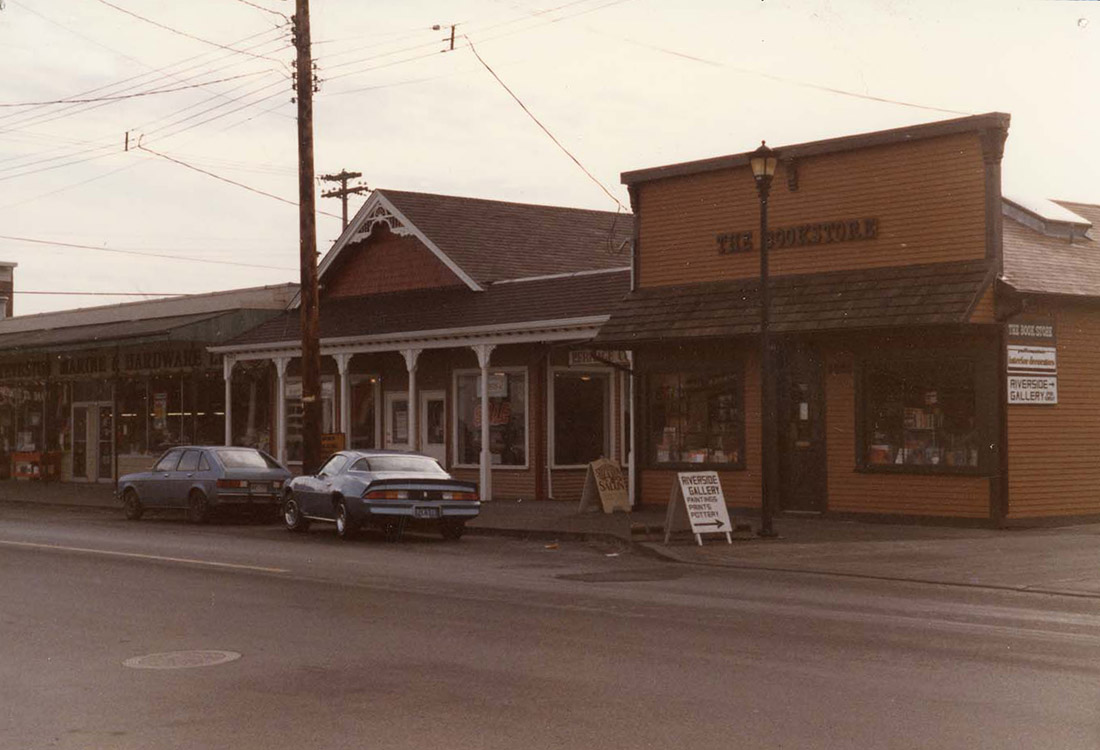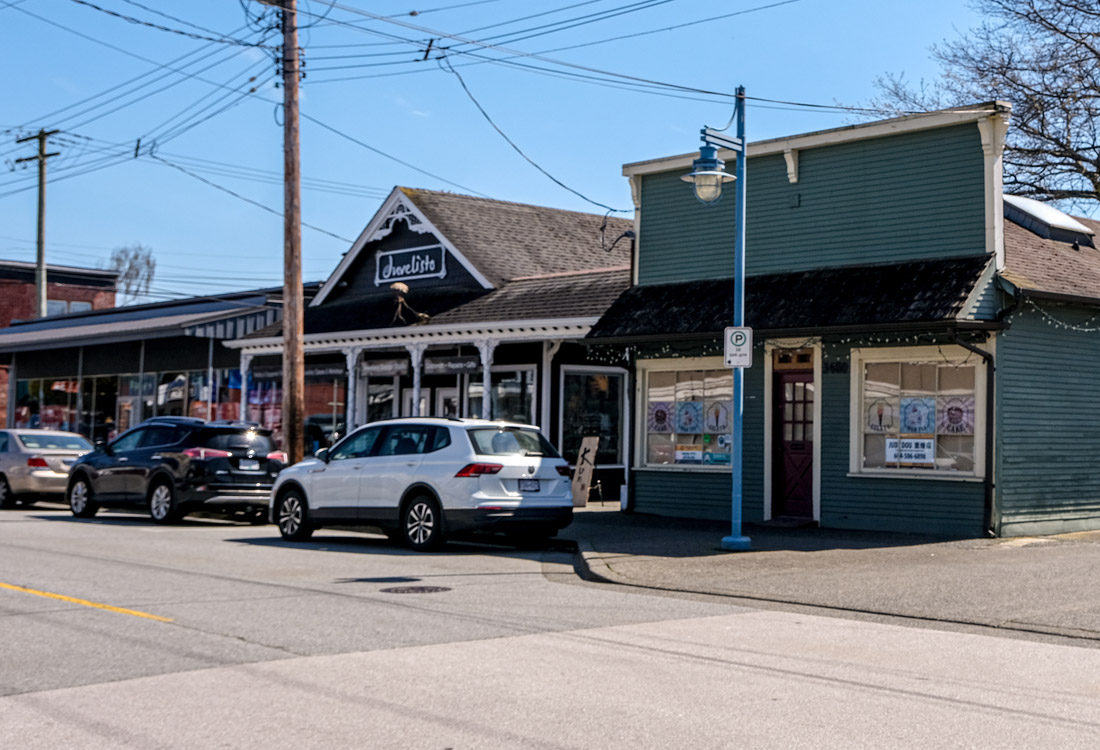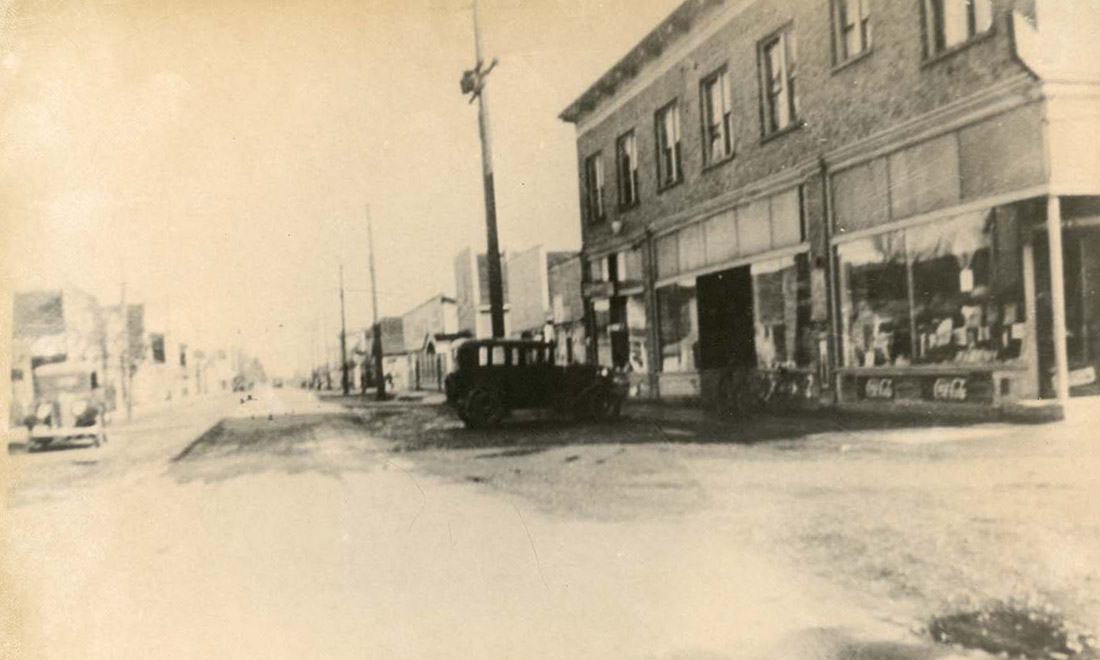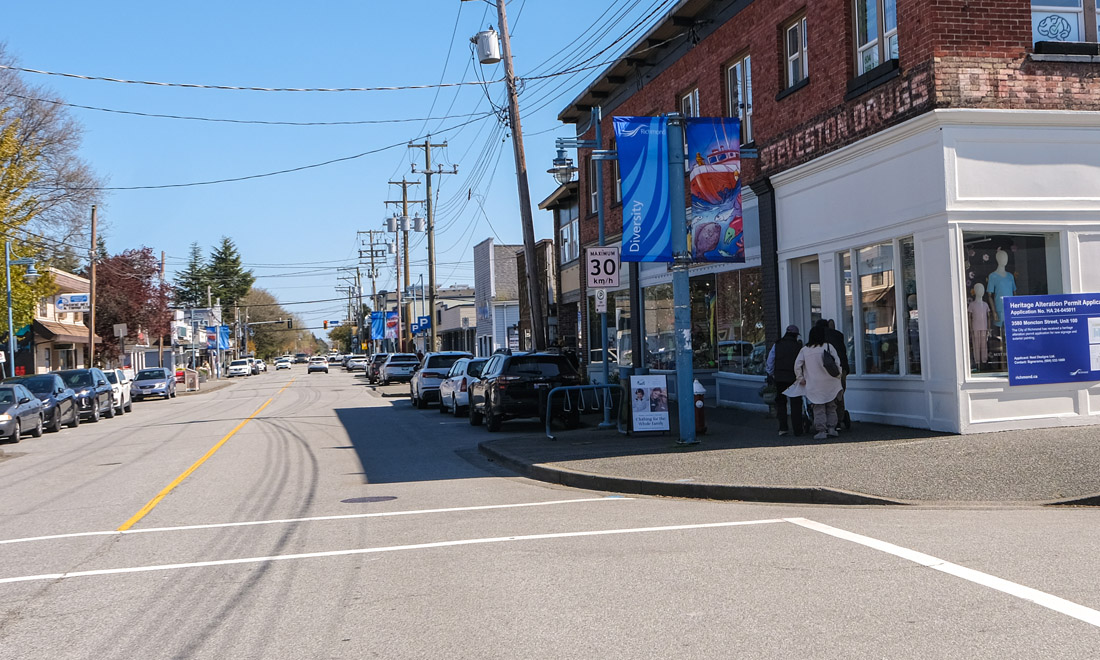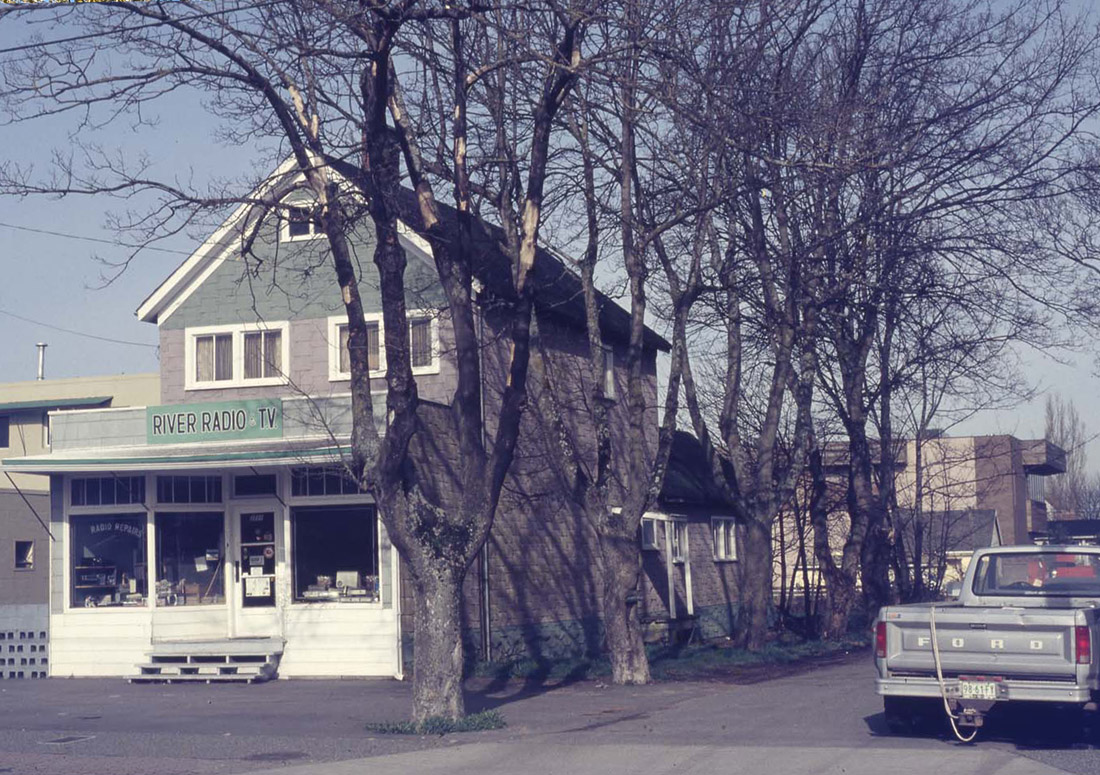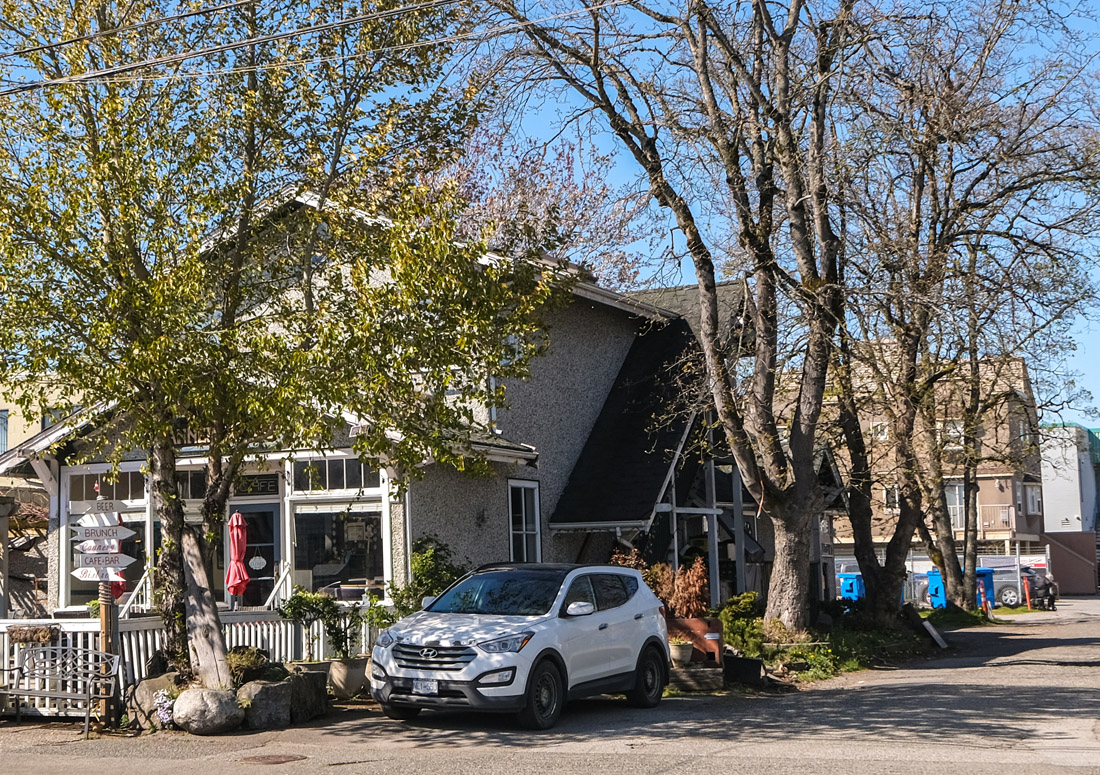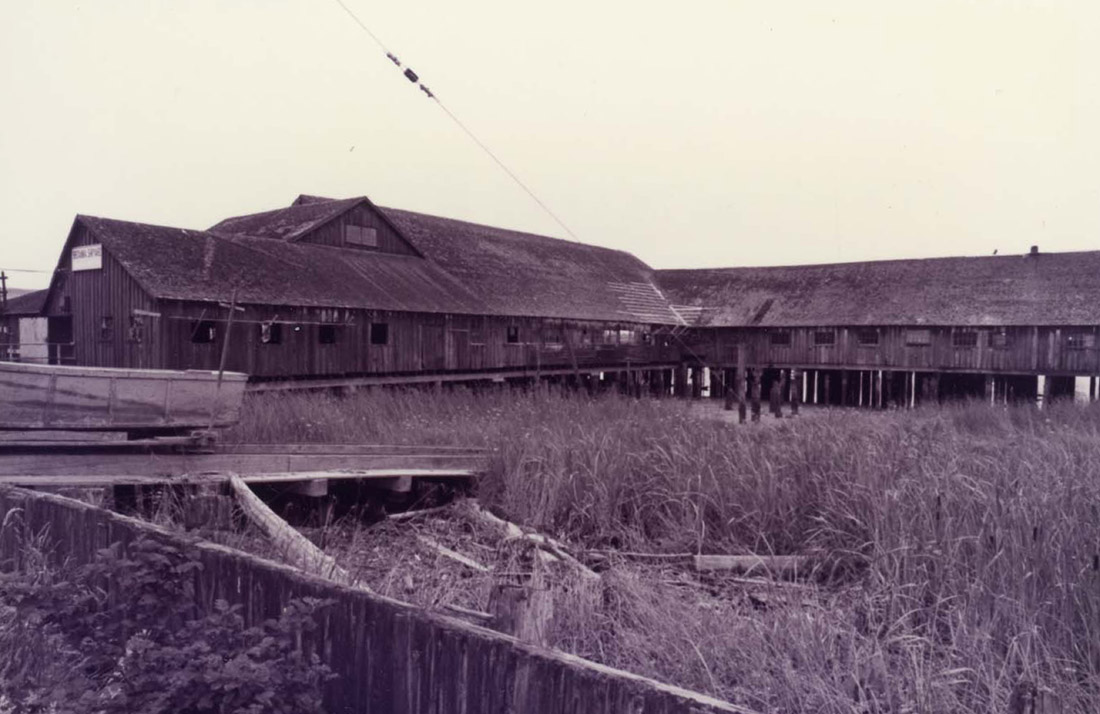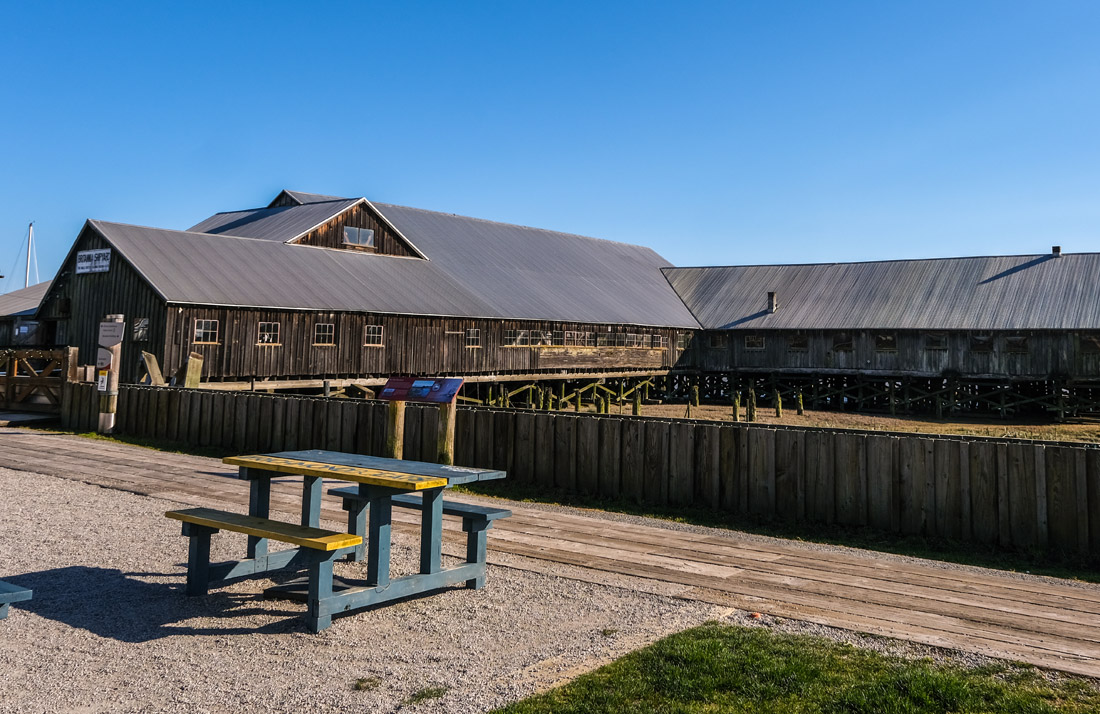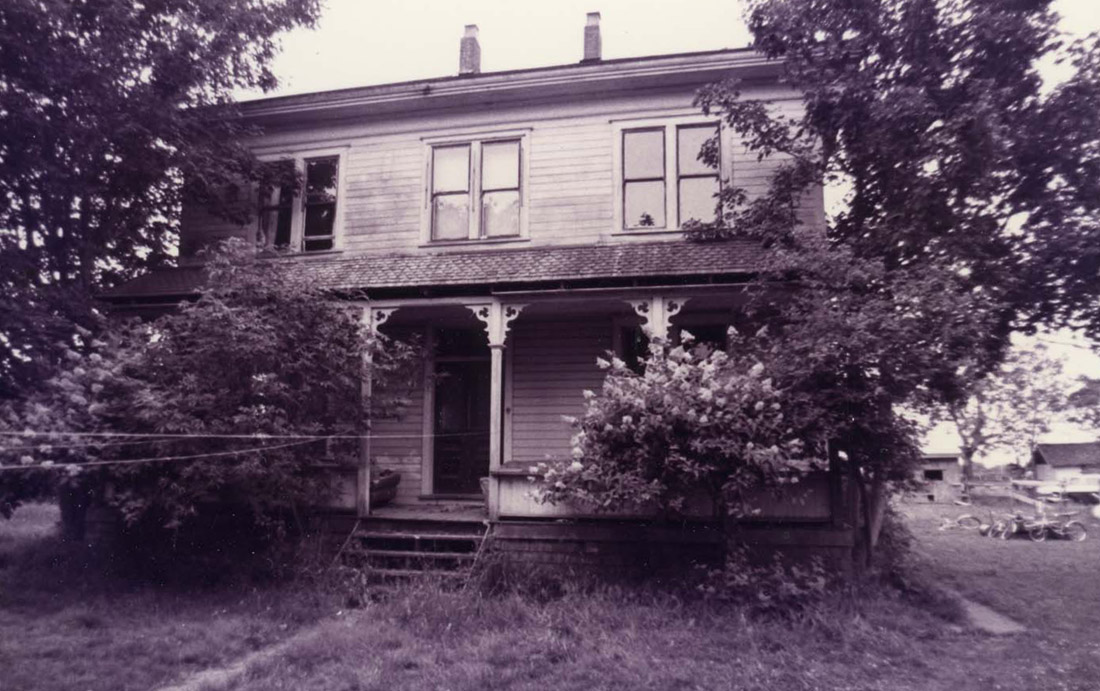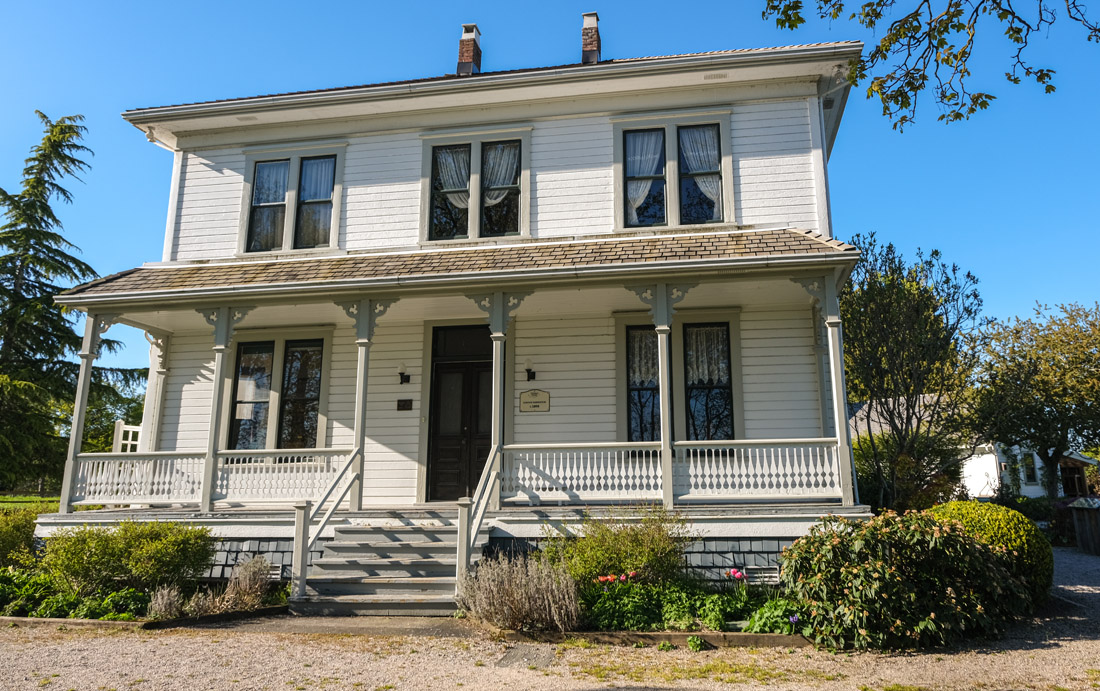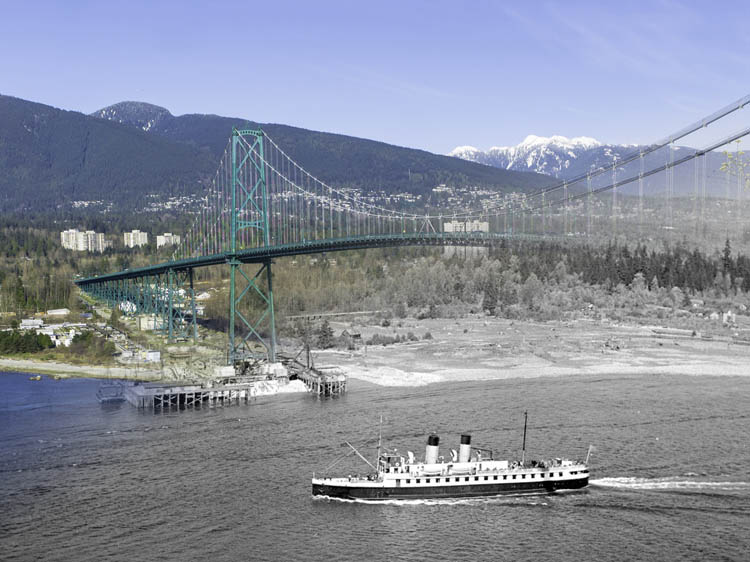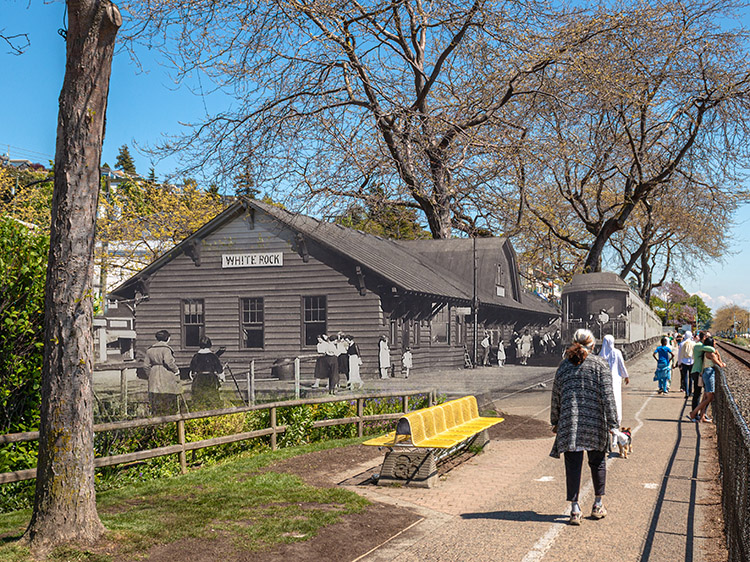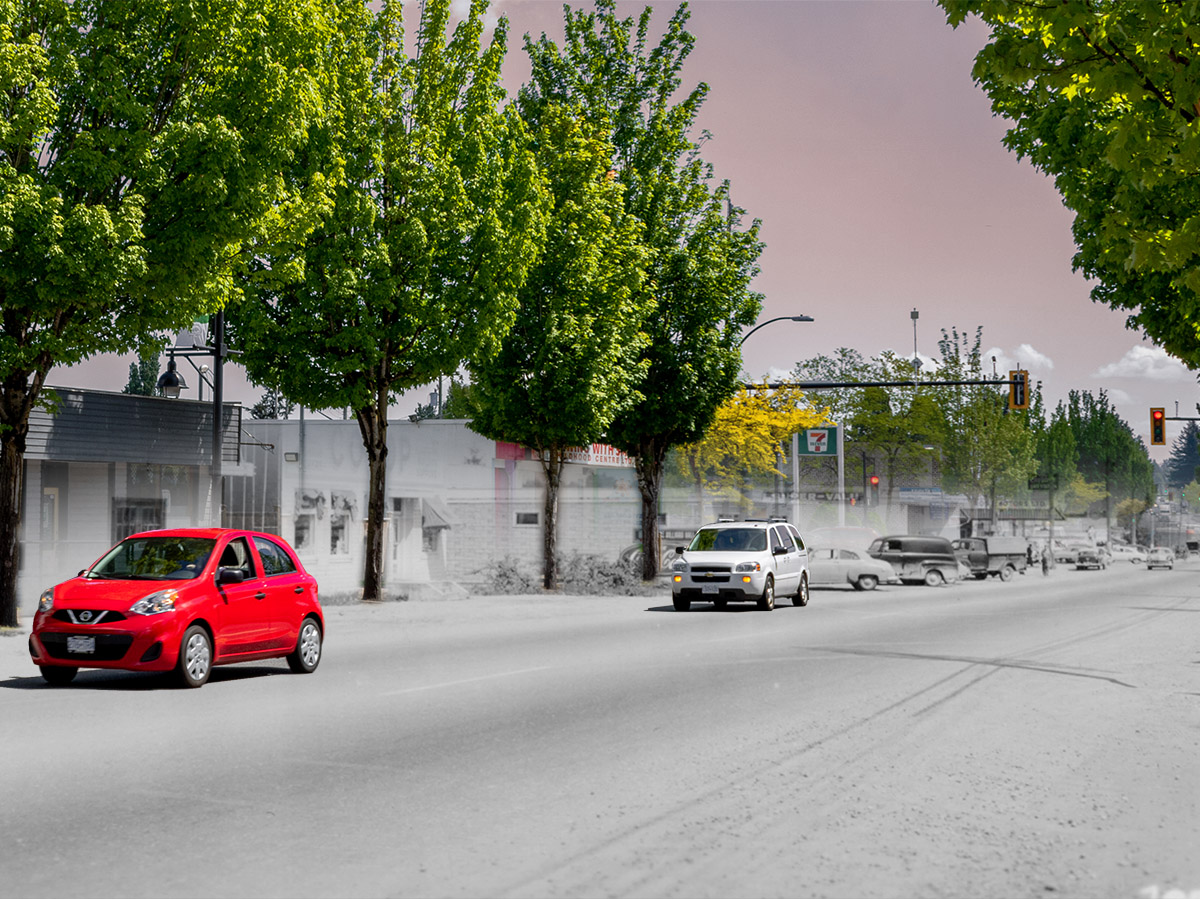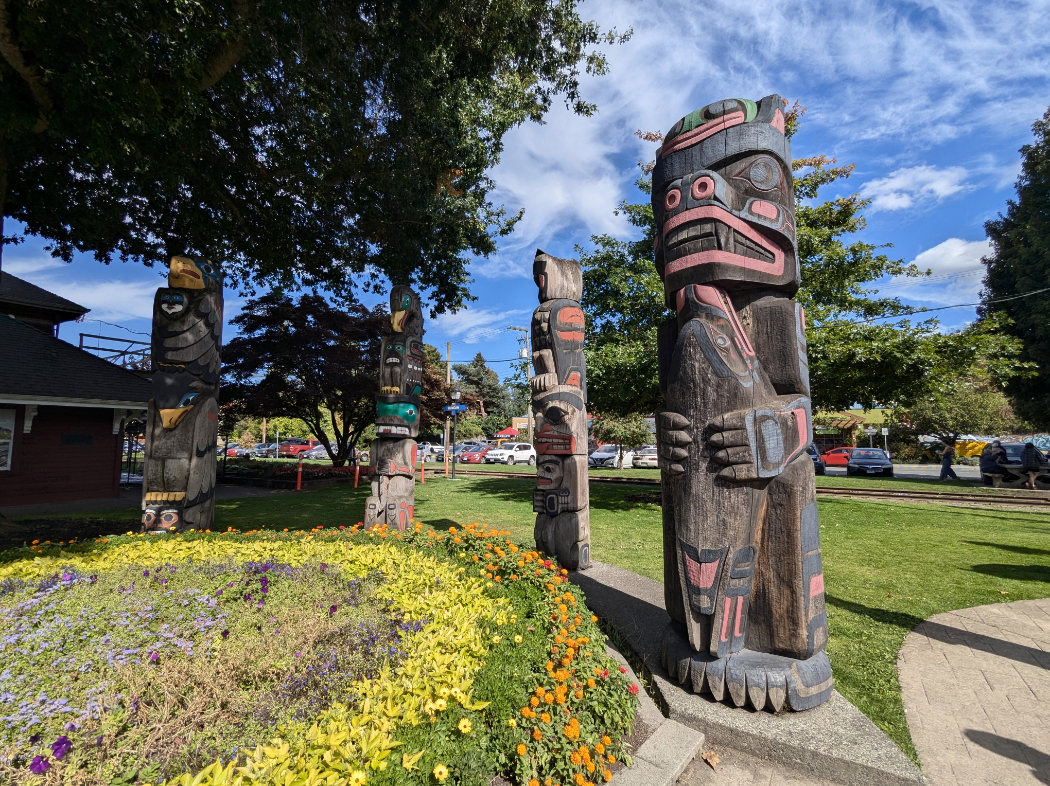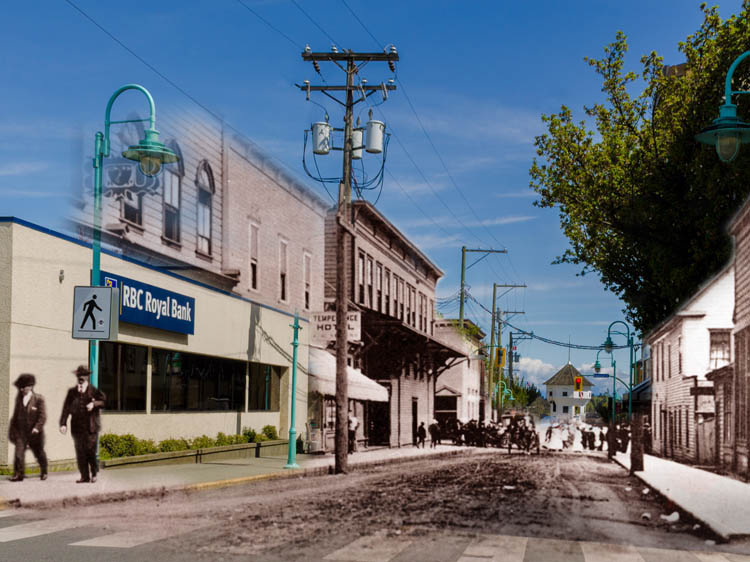Walking Tour
Treading Through Time
The Rise, Fall and Rise Again of Steveston
By the Steveston Historical Society
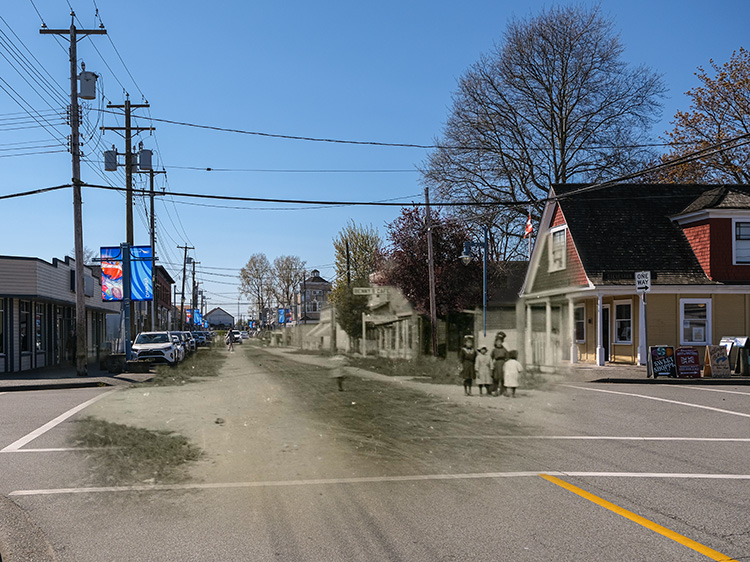
When W.H. Steves purchased land in 1886 and began laying out Steveston, he imagined a town that would rival Vancouver. Canneries, shops, farms and homes were established. People came from around the world to put down roots and the town flourished from the 1890s to the 1910s. Then boom led to bust. A decline in the salmon industry from 1913 onwards, a devastating fire in 1918, and the Great Depression in the 1930s meant years of hardship. In 1942, Steveston also lost more than half its population and many businesses when people of Japanese descent were interned. Throughit it all, the town survived to rise again. Today, Steveston is a destination renowned for its village atmosphere, waterfront beauty, and strong connection to its history.
This self-guided walking tour will take approximately 90 minutes to complete. Please take care when crossing busy streets. The tour is wheelchair-accessible, although some of the buildings listed may not be.
This project is a partnership with the Steveston Historical Society.
1. Steveston Museum & Visitor Centre
1914
Built in 1905 during Steveston's boom days, this building was the town's first bank. It opened as a Northern Bank before operating as a branch for the Royal Bank of Canada for almost 50 years. One unique feature about this building is its prefabricated construction. It was purchased from the BC Mils, Timber & Trading Company catalogue and shipped in pieces down the Fraser River from New Westminster. The building was assembled on site.
From 1966, Dr. James Campbell had his medical practice here until he sold the building in 1977. Since then, the building has been operated by the Steveston Historical Society and the City of Richmond.
Today, the building is surrounded by traditional wooden boardwalks and filled with captivating exhibits about life in Steveston Village.
Fun Fact: For many decades a bullet was lodged in a front support column after a bungled 1930s bank robbery.
2. Japanese Fishermen's Benevolent Society
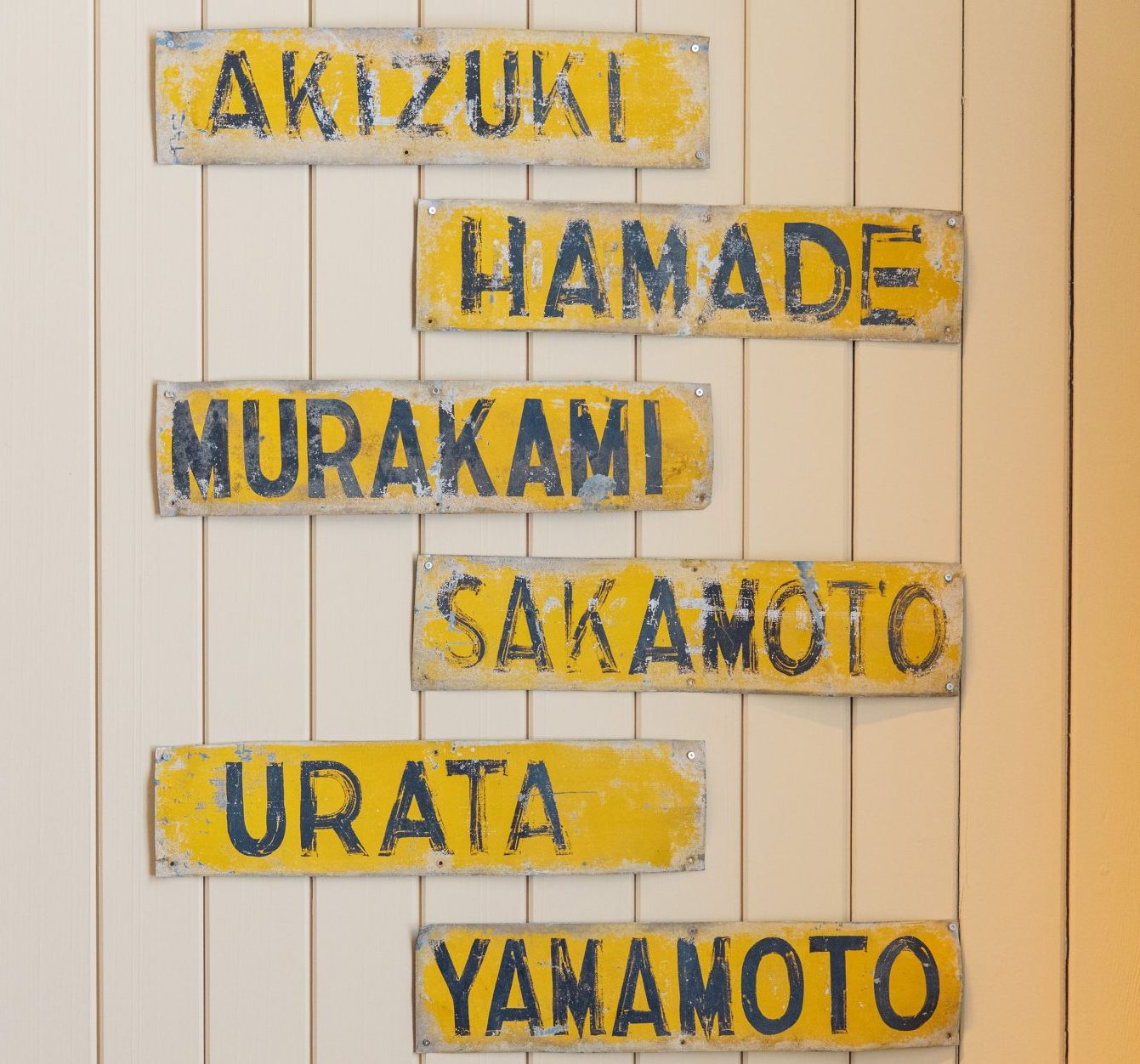
The Japanese Fishermen's Benevolent Society Building was moved on-site in 2010 from its original location at No. 1 Rd and Chatham Street. It was built in two sections in the 1890s and early 1900s. The building served as an administration office for both the 30-bed Japanese Fishermen's Hospital and the neighbouring Japanese School. Today it houses exhibits about Steveston's Japanese Canadian community.
3. Moncton Street
City of Richmond Archives, Photograph #2006 39 65
Historically, Moncton Street has been the commercial heart of Steveston. The oldest buildings on the north side of the street date back to the 1890s. The south side of the street features a number of buildings from the 1920s, a period of reconstruction after the devastating fire of 1918. By the late 1930s, the majority of businesses on Moncton Street were owned by Japanese Canadians. All of these businesses were seized by the government and eventually sold when their owners were forced from the coast and interned in 1942.
4. Town Square Park
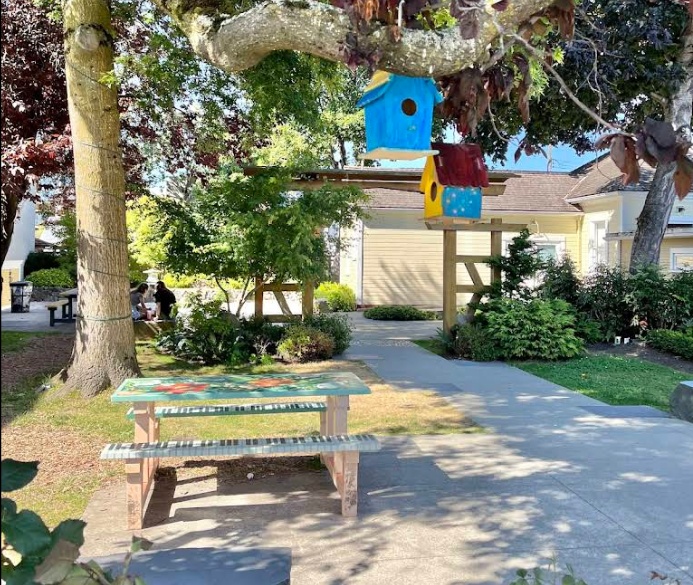
After renovations in 2016 the park better reflects both the Anglo-Canadian and the Japanese Canadian heritage of Steveston. In the north west corner, is a rare Japanese water feature, a Sui-kin-kutsu. It is only one of two in Canada. Water drips from a stone basin and then into a hidden bell-shaped urn, underground. The sound of the drops of water are amplified and create a surprise as well as a feeling of serenity. The Sui-kin-Kutsu is 'activated' manually, with a bamboo ladle. Very importantly, the basin has been sourced from Wakayama City, Richmond's sister City in Japan, the home of the first Japanese settlers to Steveston and Richmond.
Fun Fact: Big Red was so beloved by townspeople that he was nicknamed "the Mayor of Steveston."
5. Romania Country Bread
City of Richmond Archives, Photograph #2010 47 8
Built in 1927, this building has a long history of selling essential goods to the Steveston community. Originally a confectionery shop, it operated as Wakita Grocery in the early 1940s before becoming Hobbs Ready-to-Wear and Simonizing Service. The building returned to its roots in the 1970s when it opened as Marine Grocery. Today it is a bakery, selling wood fire oven baked bread.
Fun Fact: In the 1930s, Steveston residents had eight confectionery (sweets) shops to chose from.
6. Harmony Dental Studio
City of Richmond Archives 2010 47 14
Built around 1911, this building was fortunate enough to have survived the 1918 fire. It operated as a general store owned by Tokumatsu Atagi until the late 1930s. Prior to the construction of a local temple, the Steveston Buddhist congregation met in Mr. Atagi's store until they relocated to an upstairs room in the Hepworth Block. In the decades that followed, the building has been used as a theatre, a commercial fishing shop owned by Redden Net Company and a dental office.
7. Stars of Tomorrow
City of Richmond Archives 2010 51 1
This was the site of the Star Hotel, destroyed in the fire of 1918. The Japanese Canadian community bought the land constructed this building to use as a Buddhist temple in 1928. It was used as a place of worship until the community was interned in 1942. After being sold and remodelled, the building operated as the 420 seat Steva Theatre until 1960.
Fun Fact: The first film shown at the Steva Theatre in 1947 was Black Beauty. Tickets to the show cost 20 cents for an adult and 10 cents for a child.
8. Budget Appliances
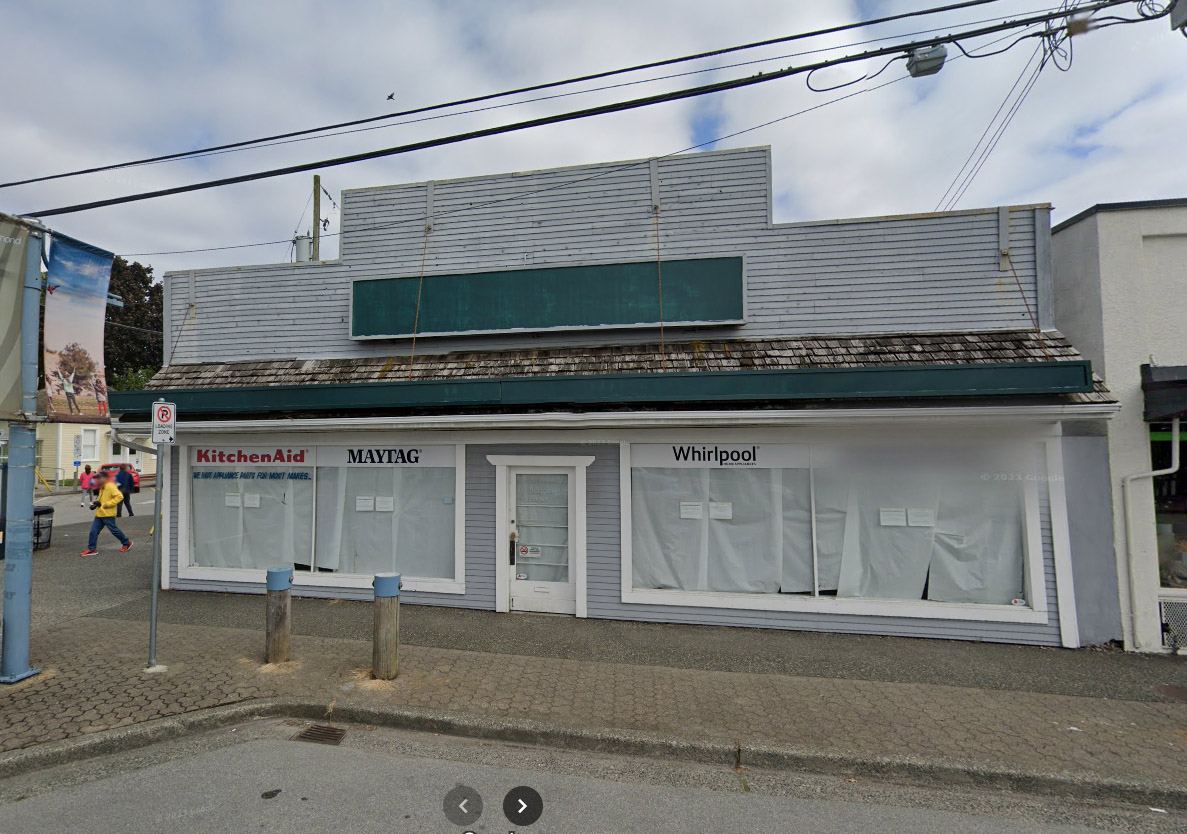
Build around 1912, this is one of the oldest commercial buildings in Steveston. It operated as Ikeda Dry Goods in the 1930s, but is best known as Ray's Dry Goods. Owned by Ray Karfoot during the 1940s and 50s, the store sold textiles and clothing to the local community. Since the 1980s, it has served as an appliance store.
9. Bare Basics Lingerie Boutique
Vancouver Archives AM54-S4-: Bu P674
ca. 1890
Prior to the First World War, this was the workshop of a local blacksmith. Many of the stables and stage companies that operated between Steveston and Vancouver in the early 1900s came here to have their horses shod.
Between the 1920s and 1950s, this building operated as Steveston Meat Market and Independent Meat and Grocery. Since then, it has housed an assortment of businesses including a cafe, jewellery store, and most recently a lingerie shop and child-care centre.
10. Village Bikes
City of Richmond Archives, Photograph #2010 47 1
1985
This 1938 building was originally the Tasaka Barbershop and designed with spaces for both living and working. It continued as Steveston Barbers until the 1970s. It was then an antique shop, and later an art store. It opened as Village Bikes in 2009. The building has been owned and operated by four generations of the same local family for over 60 years.
11. Prickly Pear Garden Centre
City of Richmond Archives, Photograph #2010 47 4
Built around 1920, this building was originally a battery shop for fishing boats. It later became a machine shop, the Eight Ball Pool Hall in the 1950s, and an upholstery shop in the 1970s. It is now a bustling garden centre.
Fun Fact: Just a few doors down was Easthope Sales and Services, a marine motors shop opened by the Easthope brothers in the 1930s.
12. Steveston Interurban Tram
This building's architecture is inspired by the Steveston Station that once stood near this site. The original Canadian Pacific Railway tracks built in 1902 run through the building, creating a fascinating heritage feature.
Between 1905 and 1958, these tracks carried BC Electric Railway Company Interurban trams between Vancouver and Steveston via Marpole. This line was part of an extensive network of streetcars in Vancouver and Interurbans that ran all the way to New Westminster and Chilliwack.
Today this building houses the Interurban Tram Car 1220, which was built in St. Louis in 1912. It is the largest artefact in the Richmond Museum's collection and one of only seven surviving Interurban tram cars.
13. Satori Integrated Health Centre
City of Richmond Archives, Photograph #1985 39 130
By 1912, this building was one of two telephone exchanges in Richmond, servicing over two dozen subscribers in Steveston. This building operated as an exchange until 1954, when Richmond converted to dial service. Since then, it has been a union office and is now a health care centre.
Fun Fact: Steveston received its first telephone call in 1891 at J.C. Furlong's General Store on Second Avenue.
14. Richmond Hospital Auxiliary Thrift Shop
City of Richmond Archives, Photograph #1977 13 10
This building has deep roots in Steveston's multicultural community. Built by volunteers in 1894 as Steveston's First Methodist Church, it became the Steveston United Church in 1925. In 1953, this was the first United Church in Canada to amalgamate Japanese-Canadian and Anglo-Canadian congregations post-Second World War. After decommissioning in 1978, the building was a bike shop for many years and is now a fundraising thrift shop for the Richmond Hospital Auxiliary.
15. Anar
City of Richmond Archives, Photograph #2013 12 1
This site was donated by the Steves family for the first courthouse and jail in the early 1890s. The current building was constructed around 1925 to replace a nearby building that housed the courthouse, firehall, and police station. During World War II, it became the local Red Cross headquarters. Since then, the building has served as a community hall, law office, and tea shop.
16. Steveston Hotel
City of Richmond Archives, Photograph #1977 19 25
The Sockeye Hotel was built around 1895 and renamed the Steveston Hotel in 1908. It was a refuge for many after the fire of 1918 and housed the post office during Steveston's rebuilding. The lone survivor of six hotels that once existed in Steveston, it continues to operate as a hotel, restaurant, and pub.
Fun Fact: The hotel's facade has been remodelled many times over the years, from stately Victorian to Art Deco and finally to its modern appearance.
17. Gulf of Georgia Cannery National Historic Site
City of Richmond Archives, Photograph #1999 4 3 1312
1957
Build in 1894, and nicknamed the "Monster Cannery", this was once the largest of Steveston's 15 canneries and one of the biggest in British Columbia.
Originally a salmon cannery until canning operations came to a halt during the Great Depression of the 1930s, the site continued to operate as a raw fish station and net loft until the 1940s. During the Second World War, herring was canned here to send overseas to Allied soldiers. Later, the cannery operated as a herring reduction plant until it closed in 1979.
The site was declared a national historic site in 1976 and is now a museum presenting the history of the West Coast fishing industry, operated by the Gulf of Georgia Cannery Society on behalf of Parks Canada.
18. Steveston Harbour
City of Richmond Archives, Photograph #1978 34 40
Steveston Harbour has been the hub of Steveston's commerce through its history. Today it is managed by the Steveston Harbour Authority. Up to 500 fishing boats regularly moor here. At the turn of the 20th Century, over a dozen tall ships from around the world docked in Steveston Harbour at any given time to load tins of salmon destined for international markets.
Fun Fact: In the early 1900s, children flocked to the docked tall ships to gaze at exotic animals, such as monkeys and parrots, kept as pets by sailors.
19. Dave's Fish and Chips
City of Richmond Archives, Photograph #2010 47 16
For decades, Steveston Post Office was the nomadic essential service of the town. It moved 13 times between 1890 and 1978. It was housed in this building in 1972, the same year its official name changed from "Steveston Post Office" to "Vancouver Sub 142". To this day, locals still refuse to acknowledge this change.
Now famous for some of the best fish and chips in town, the cutouts of four post office wickets can still be seen in the restaurant's south wall.
20. It's Posh
City of Richmond Archives, Photograph #2010 47 15
This building was built by Iwajiro Wakida and was part of Steveston's reconstruction in the 1920s. Mr. Wakida lived and worked here until he was interned in 1942. By 1947, it was the Steveston Furniture Exchange. Following a fire in 1983, it has been a bookstore, art gallery, and gift shop.
Fun fact: The exterior of this building, along with others on the street, have often been used as a set for movies and television shows filmed in the village.
21. Hepworth Block
City of Richmond Archives, Photograph #1977 2 14
Local physician Dr. Hepworth paid $13,500 for this building to be built in 1913 after his first office on the same site burned down in 1907. It survived the 1918 fire due to its brick construction. The bricks are rumoured to have been ballast from British sailing ships exporting Steveston's canned salmon. Many businesses have been based out of this building. The corner shop as a drug store for over 50 years.
Fun fact: According to some locals, a ghostly presence haunts part of this building.
22. Seppo's Automotive
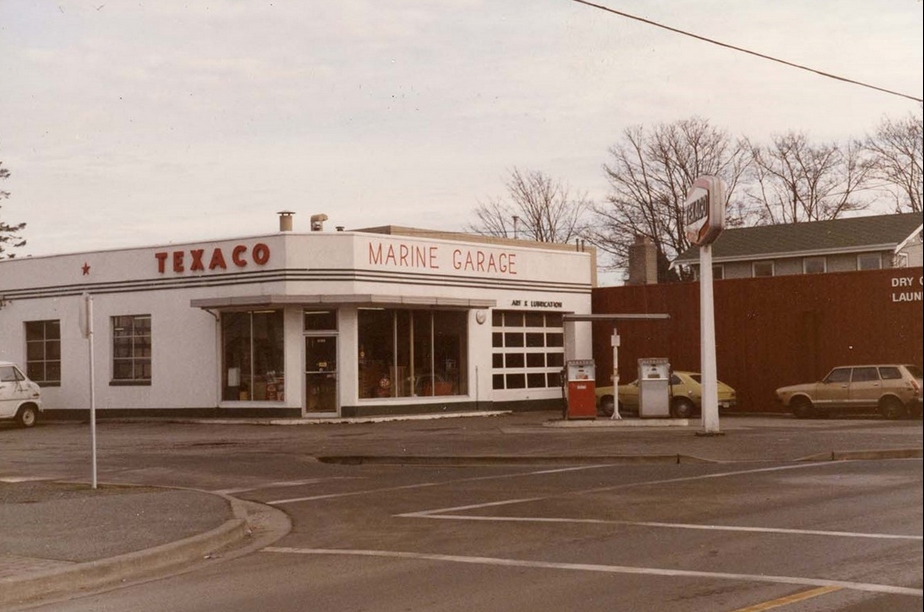
City of Richmond Archives, Photograph #2008 39 1 135
This Art Deco building was originally Hunt's General Store before becoming the Walker Emporium until the 1930s. Hayao Hirota converted the hardware store into a gas station and repair garage in 1936. It became the Marine Garage after its Japanese Canadian owners were interned in 1942. Although the vintage gas pumps are no longer in use, it is still a car repair garage.
23. Cannery Cafe
This is one of the oldest buildings in Steveston. Built in the late 1890s, it was the cookhouse for the Lighthouse Cannery, which was destroyed in the fire of 1918. In the decades that followed, it became a private residence and then the River Radio Sales and Service Shop. In 1984, the building opened as a cafe and it is still a popular eatery.
Fun fact: The Cannery Cafe started serving Richmond's first cappuccinos in 1984.
24. Steveston Landing & Fisherman's Wharf
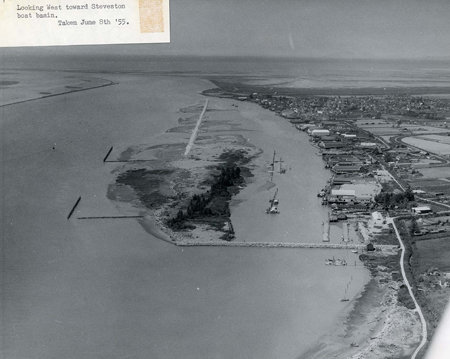
City of Richmond Archives, Photograph #1977 1 18
1955
These buildings were opened in 1990 to commemorate the 100th anniversary of Steveston Village. Their design evokes the industrial architecture of the canneries and boardwalks that once stood here but were destroyed in the 1918 fire. The landing has a wide variety of restaurants and stores. The public can buy seasonal seafood direct from commercial boats docked at Fisherman's Wharf.
25. Britannia Shipyards National Historic Site
City of Richmond Archives, Photograph #1996 13 54
1973
Once a diverse community built on pilings and connected by boardwalks, today the heritage buildings tell the stories of the oldest shipyard community in British Columbia.
Built in 1889, the Britannia Cannery operated as a single canning line until 1917. As a result of the rockslides at Hell's Gate four years earlier, many canneries were forced to closer or were converted to other uses. The Britannia site served as a shipyard and maritime repair shop until 1979.
Declared a national historic site in 1991, many of the remaining buildings now house exhibits featuring stories of separation, hard work, friendship, ingenuity, and hope experienced by the multicultural workforce.
26. London Heritage Farm
City of Richmond Archives, Photograph #1996 13 31
Completed in the late 1890s, the farmhouse was home to two generations of the London family. Charles and his brother William arrived from Ontario in 1877. They purchased 200 acres and began to clear the land for farming. Charles married Henrietta Dalzeil in 1888 and raised their family of five here.
Their eldest daughter Lucy and her husband Herbert Howse also raised their family in the house until 1948. For decades it was a rental property until it was purchased by the City of Richmond in 1978.
After extensive renovation it was reopenedto the public in 1983. Today it is a museum depicting farm life in Richmond at the turn of the 20th century, and also features a tea room and gift shop. The Farm has beautiful grounds showcasing heritage perennial gardens and displays of historic farm equipment.



